Modern garden edging transforms outdoor spaces by creating clean boundaries while enhancing aesthetic appeal. Contemporary landscaping embraces innovative materials, sustainable practices, and technology integration to achieve sophisticated garden definition. These edging solutions combine functionality with striking visual impact, offering homeowners versatile options for creating distinctive outdoor environments that reflect current design sensibilities.
1. Corten Steel Garden Edging with Industrial Weathering
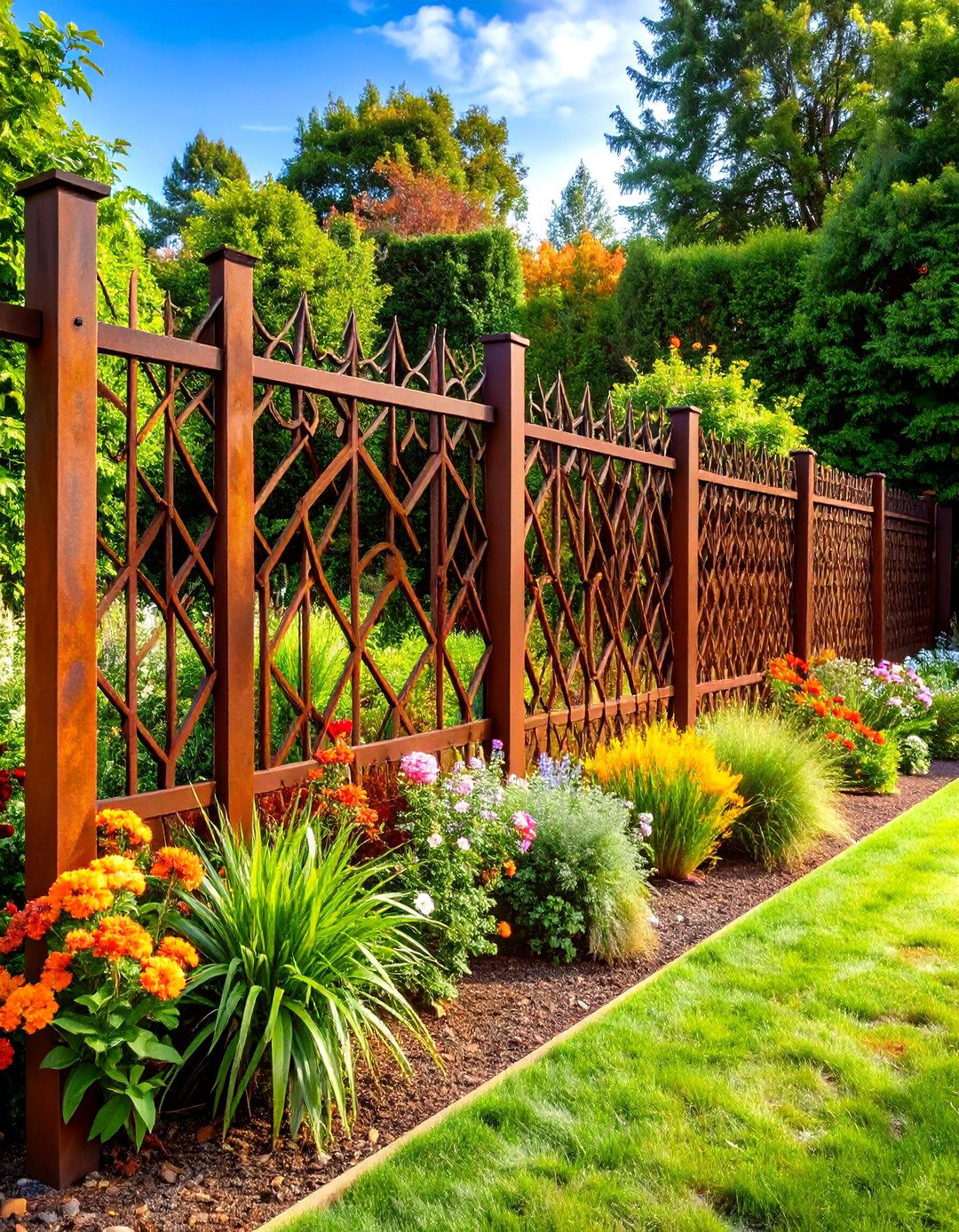
Corten steel garden edging delivers an industrial aesthetic that develops a beautiful rust-colored patina over time. This self-weathering steel requires minimal maintenance while providing exceptional durability against harsh weather conditions. The material's distinctive orange-brown finish creates striking contrast against green plantings and contemporary hardscaping. Installation involves securing straight or curved sections using hidden stakes, allowing flexibility for geometric or organic garden designs. The patina process takes several months to complete, gradually transforming from raw steel to rich, weathered tones that complement both modern and traditional landscape styles.
2. LED-Integrated Smart Garden Edging Systems

Smart garden edging incorporates LED lighting technology with smartphone-controlled color customization and timing features. These systems transform garden boundaries into dynamic lighting displays that enhance evening ambiance while providing practical pathway illumination. Solar-powered options eliminate wiring requirements, while hardwired systems offer consistent performance and advanced programming capabilities. Installation typically involves connecting modular sections that house waterproof LED strips, creating seamless light distribution along garden perimeters. The technology allows users to adjust brightness, select colors, and program automatic on/off schedules through dedicated mobile applications.
3. Poured Concrete Garden Edging with Sculptural Curves
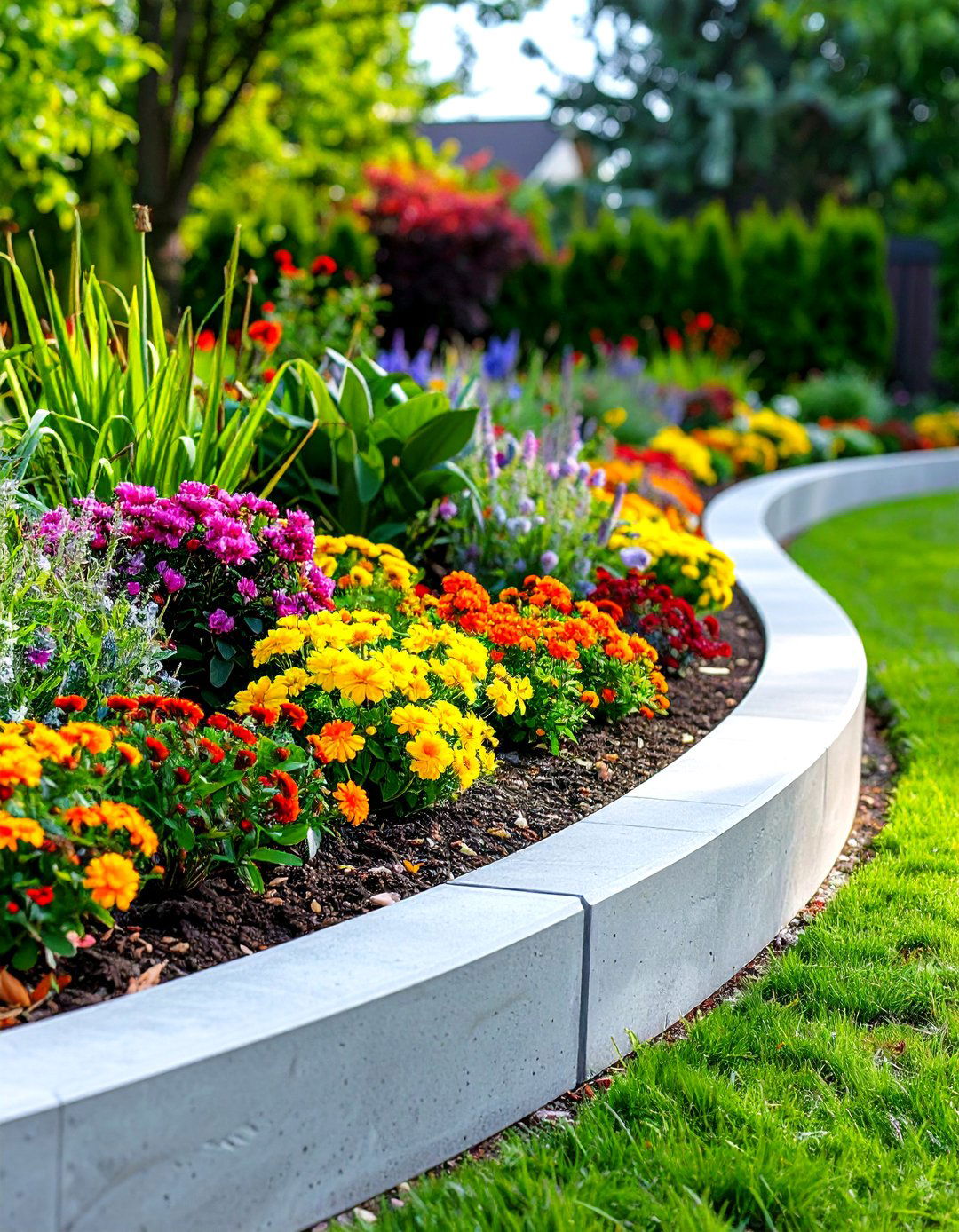
Curved concrete garden edging creates flowing, organic boundaries that soften rigid landscape lines and enhance visual interest. This approach involves pouring concrete in custom-formed curves, allowing complete design freedom for unique garden shapes. The material accepts various finishes including stamped patterns, colored pigments, and exposed aggregate textures. Installation requires careful planning and temporary forming systems to achieve smooth curves and consistent height. The resulting edging provides permanent, low-maintenance borders that complement contemporary garden designs while offering excellent root barrier properties.
4. Bamboo Garden Edging with Natural Sustainability
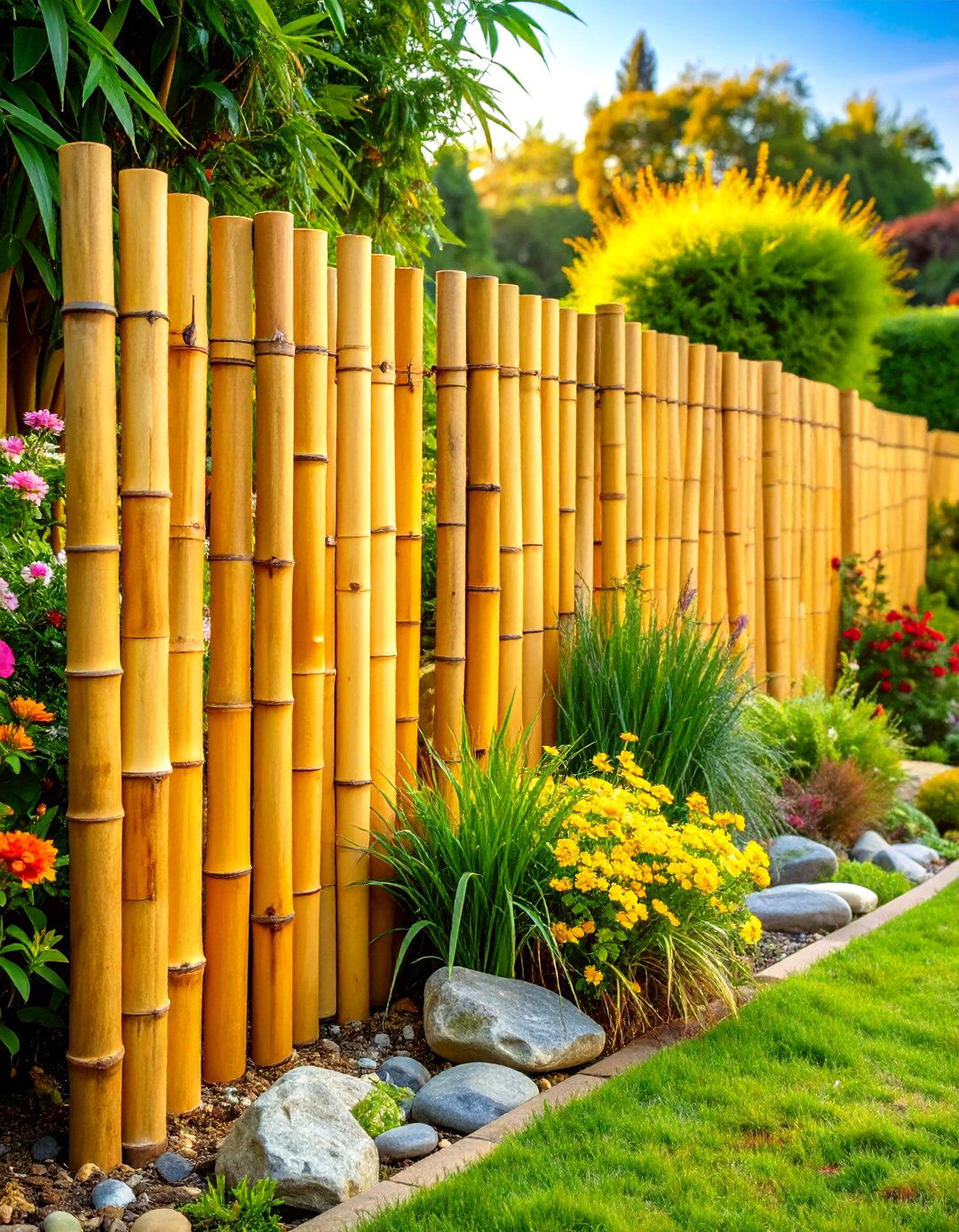
Bamboo garden edging offers an eco-friendly alternative that brings tropical warmth to contemporary landscapes. This sustainable material features naturally antibacterial properties and rapid renewability, making it environmentally responsible. Vertical bamboo stakes connected with galvanized wire create flexible sections that adapt to curved garden beds and pathways. The material's natural golden color complements diverse planting schemes while providing effective soil containment. Installation involves securing bamboo sections with ground stakes and connecting adjacent pieces for continuous boundaries that age gracefully while maintaining structural integrity.
5. Recycled Rubber Garden Edging with Eco-Conscious Design
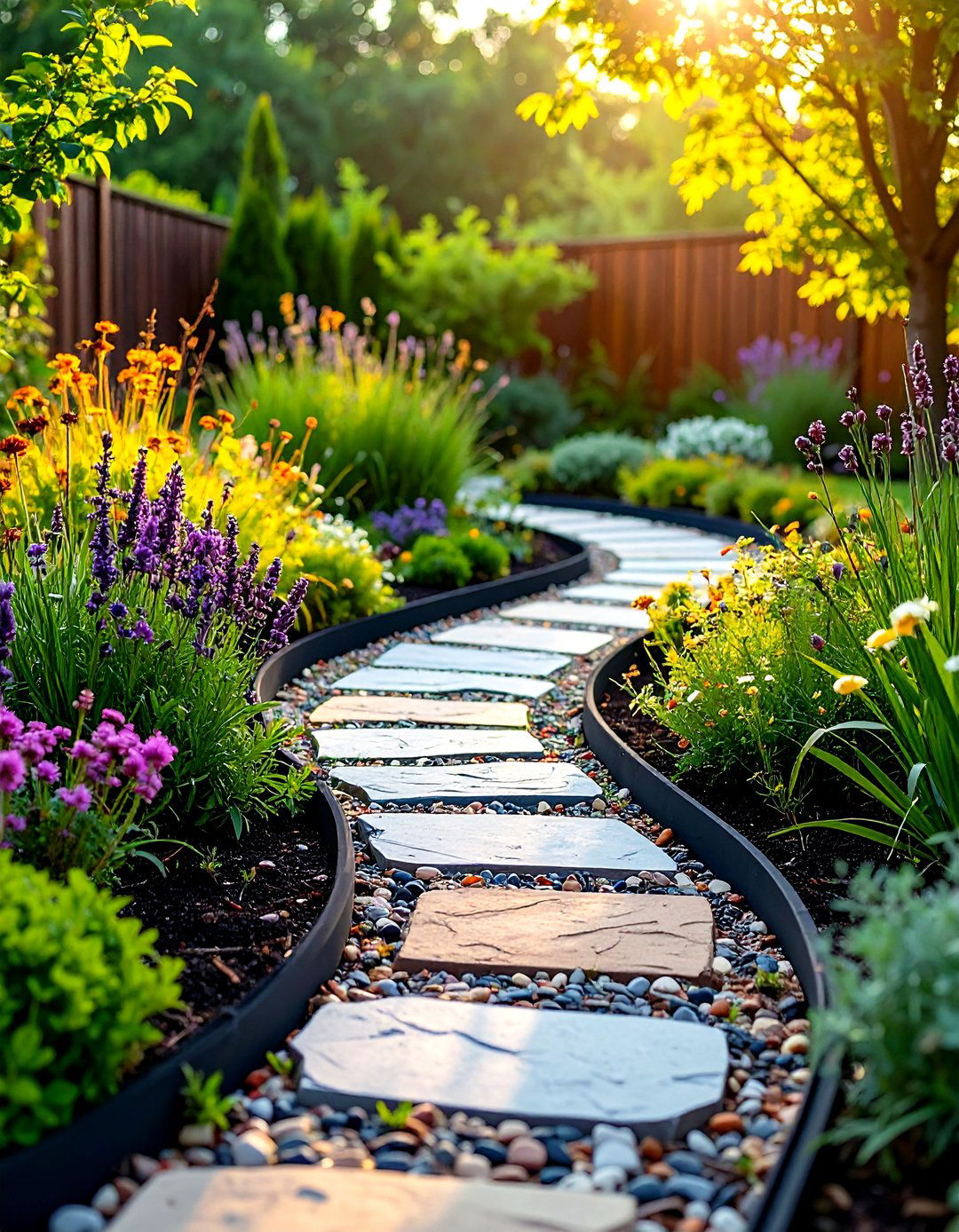
Recycled rubber garden edging transforms waste materials into durable, flexible landscaping solutions that resist weather damage and ground movement. This sustainable option offers excellent value through long-term performance and minimal maintenance requirements. The material's flexibility allows easy installation around curves and irregular shapes while providing effective root barriers. Various colors and textures simulate natural materials like stone or wood without environmental impact. Installation typically involves digging shallow trenches and securing sections with provided stakes, creating professional-looking borders that support sustainable gardening practices.
6. Gabion-Style Garden Edging with Wire and Stone
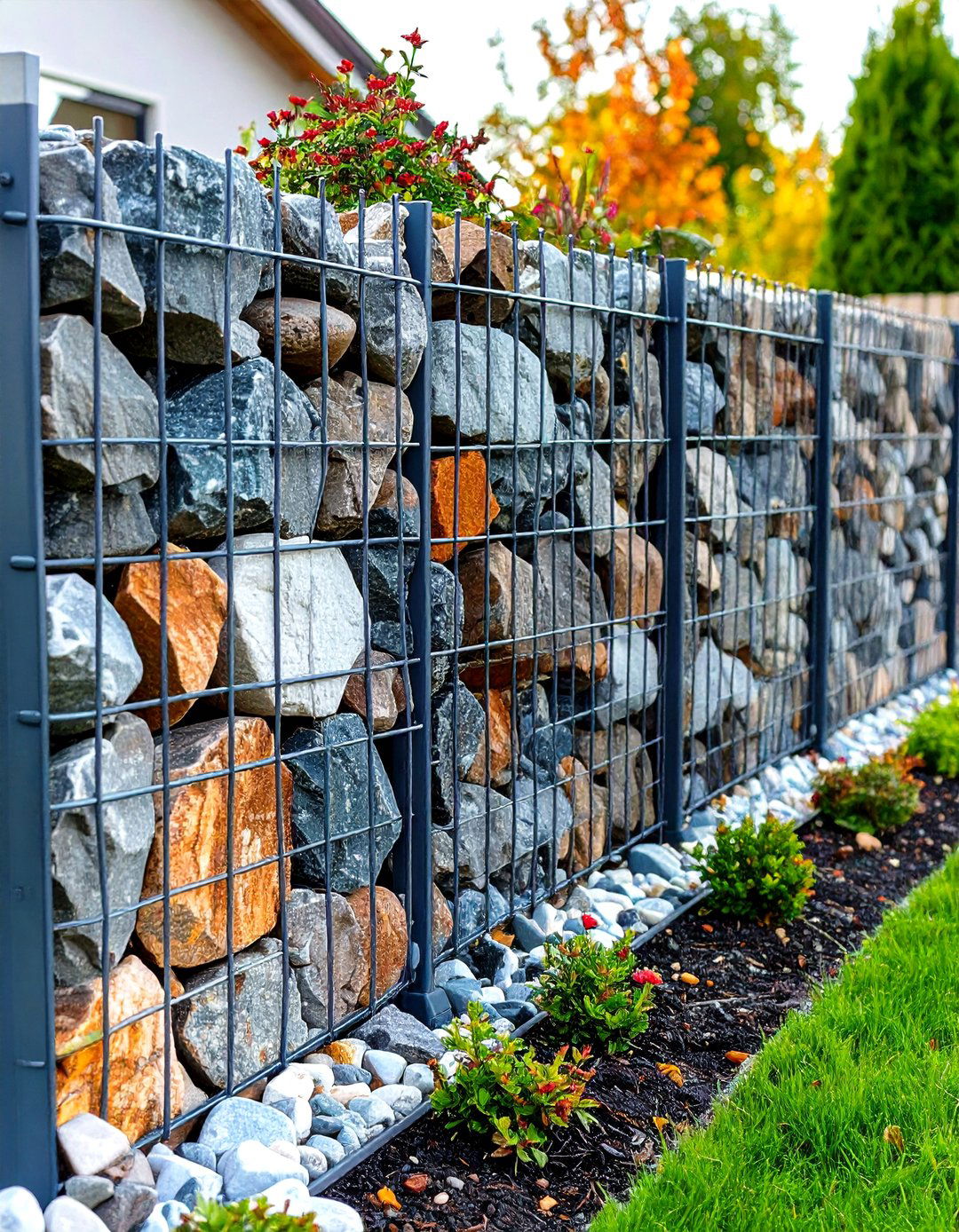
Gabion-style garden edging combines wire mesh containers with decorative stone fill to create sturdy, visually striking boundaries. This approach offers excellent drainage while accommodating various stone types and sizes for customized appearances. The wire framework provides structural support while allowing creative stone arrangements that complement surrounding hardscaping. Installation involves assembling pre-fabricated wire sections and filling with selected aggregates, creating substantial borders suitable for raised beds or retaining applications. The design allows plant growth through wire openings, creating integrated living boundaries that evolve naturally.
7. Composite Polymer Garden Edging with Weather Resistance
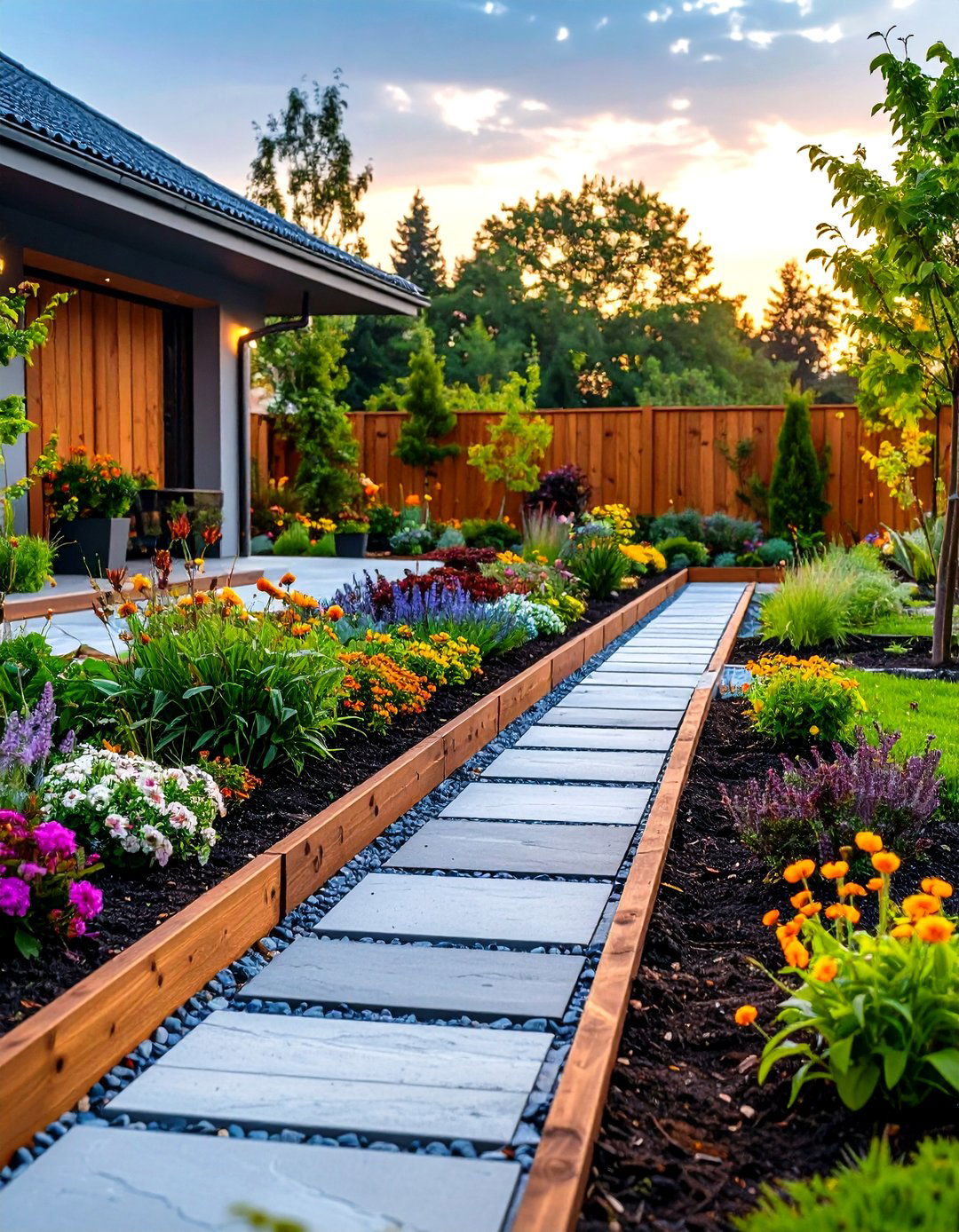
Advanced composite polymer garden edging delivers wood-like appearance without maintenance concerns or weather degradation. These manufactured materials resist rot, insects, and UV damage while maintaining consistent color and texture over years of exposure. Various profiles simulate traditional materials including timber, stone, and metal with superior durability characteristics. Installation utilizes hidden fastening systems that create seamless connections between sections. The material's consistent dimensions enable precise installation while its engineered properties ensure long-term performance in demanding outdoor conditions.
8. Glass Block Garden Edging with Contemporary Illumination
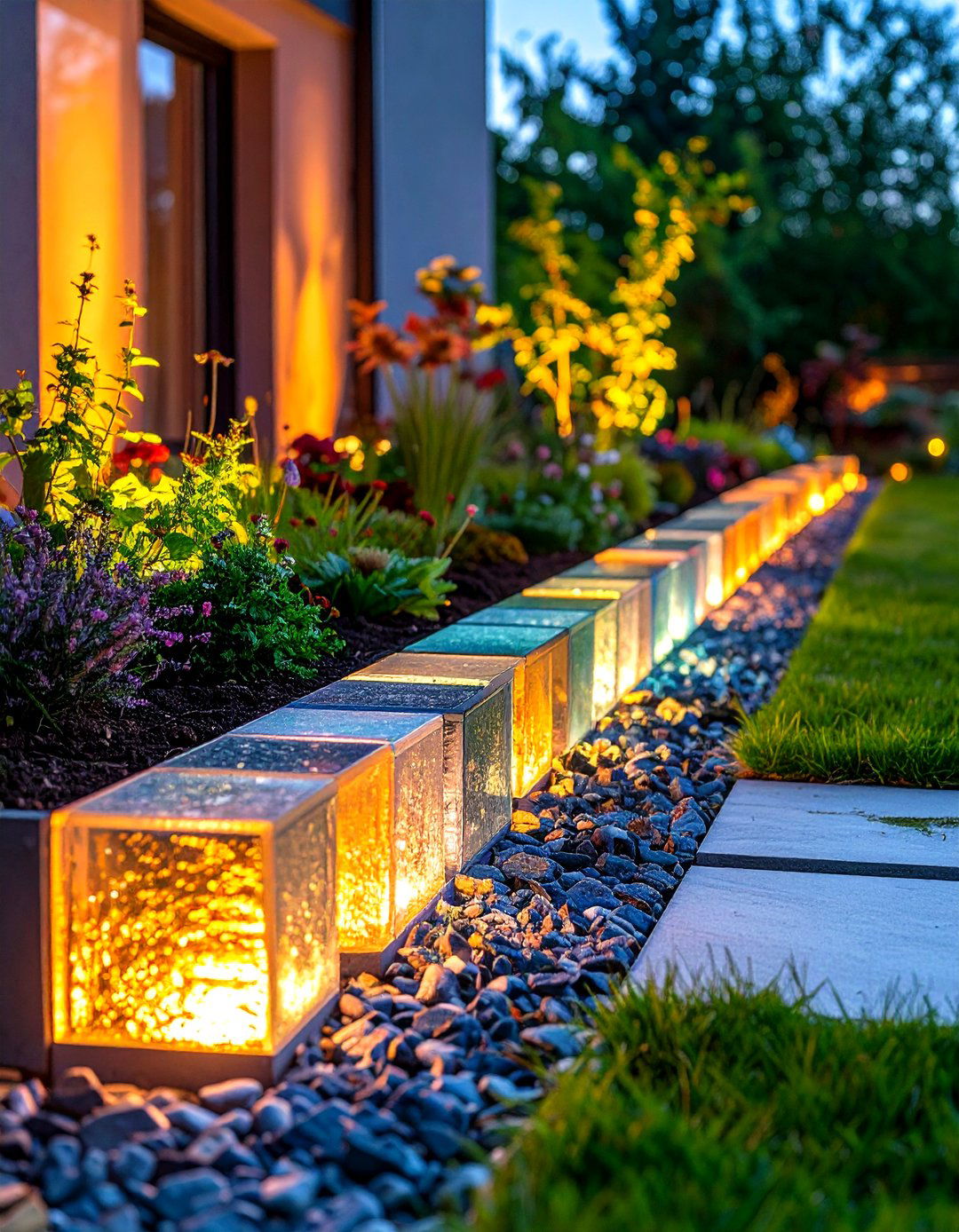
Glass block garden edging creates luminous boundaries that transmit natural light while providing substantial plant barriers. This contemporary approach combines architectural elements with landscape design, creating sophisticated garden transitions. Various glass textures and colors offer customization options that complement specific design themes. Installation requires concrete footings and careful alignment to ensure proper drainage and structural integrity. The material's light-transmitting properties create unique visual effects throughout the day while providing excellent durability against weather extremes and ground movement.
9. Perforated Metal Garden Edging with Geometric Patterns
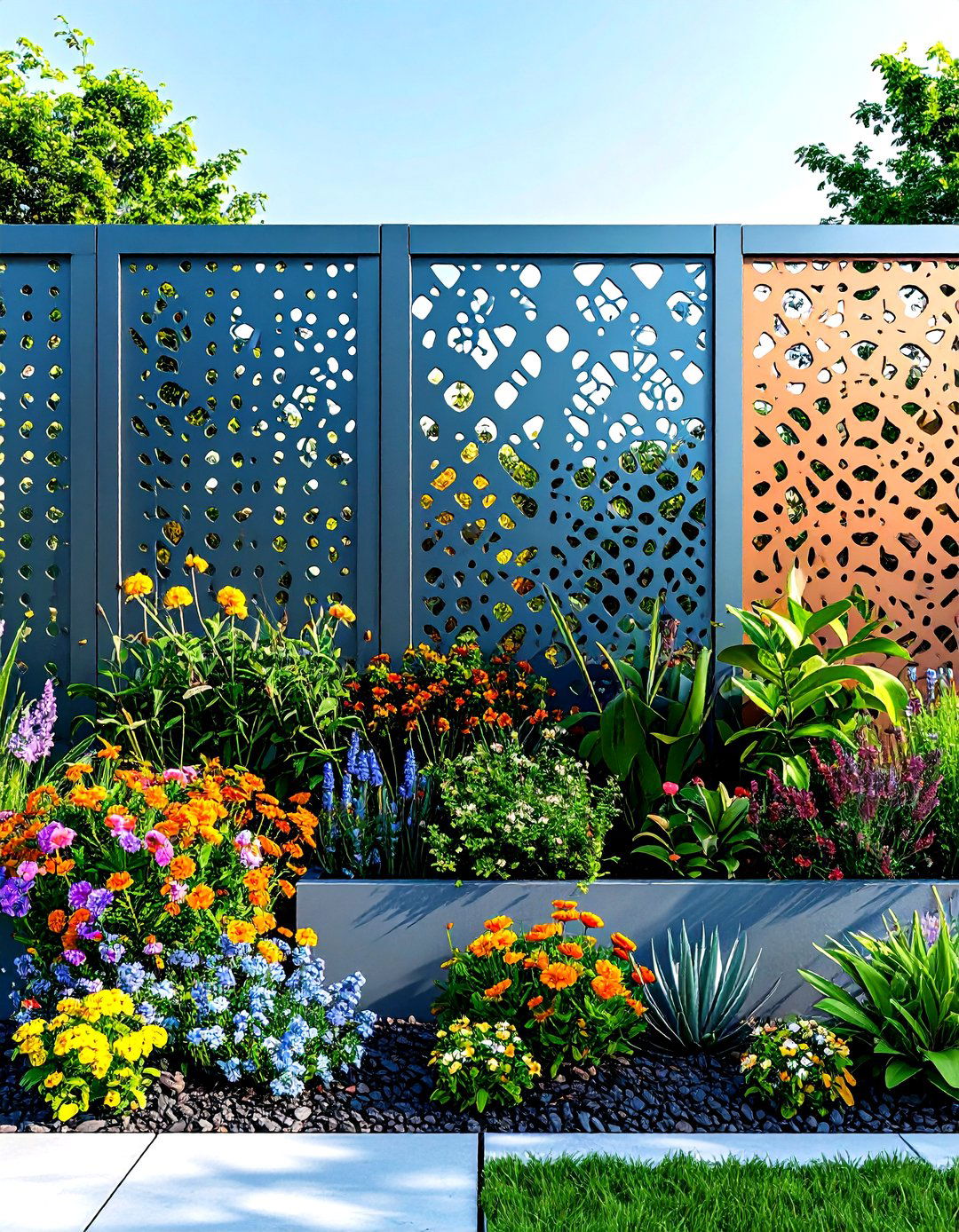
Perforated metal garden edging combines industrial aesthetics with functional plant barriers through precision-cut geometric patterns. This approach allows selective plant growth while maintaining clear boundary definition. Various metals including aluminum, steel, and copper offer different color options and weathering characteristics. The perforations create visual interest through shadow play and light transmission while providing drainage benefits. Installation involves securing panels to buried posts or concrete foundations, creating clean lines that complement contemporary architecture and minimalist garden designs.
10. Natural Stone Paver Garden Edging with Timeless Appeal
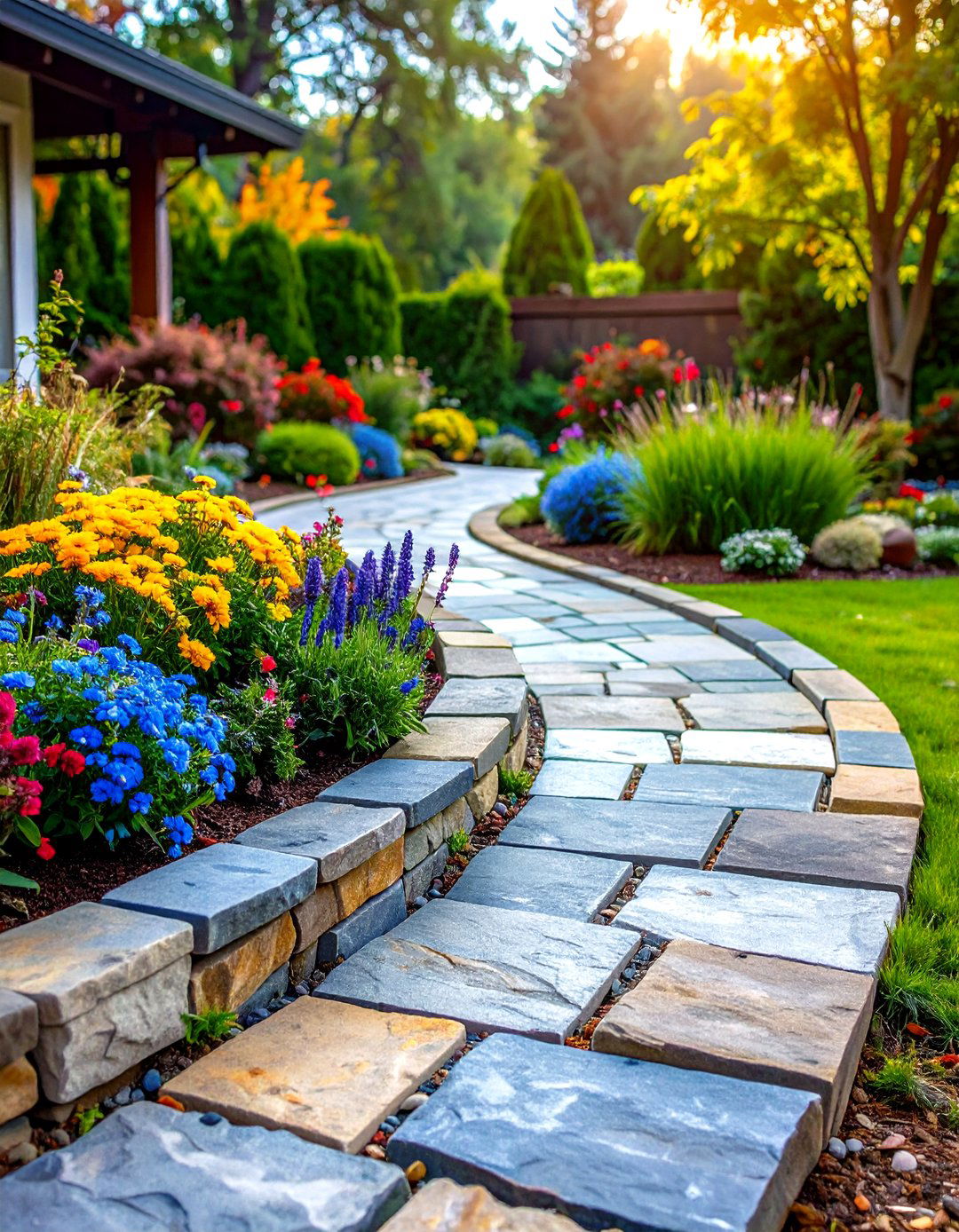
Natural stone paver garden edging provides permanent, elegant boundaries using materials like granite, limestone, and sandstone. This classic approach offers exceptional durability and natural beauty that improves with age. Various stone sizes and shapes allow creative patterns and textures that complement diverse garden styles. Installation requires proper base preparation and careful alignment to ensure stability and drainage. The material's natural variations create unique character while providing excellent root barriers and soil containment for long-term garden organization.
11. Modular Aluminum Garden Edging with Sleek Profiles
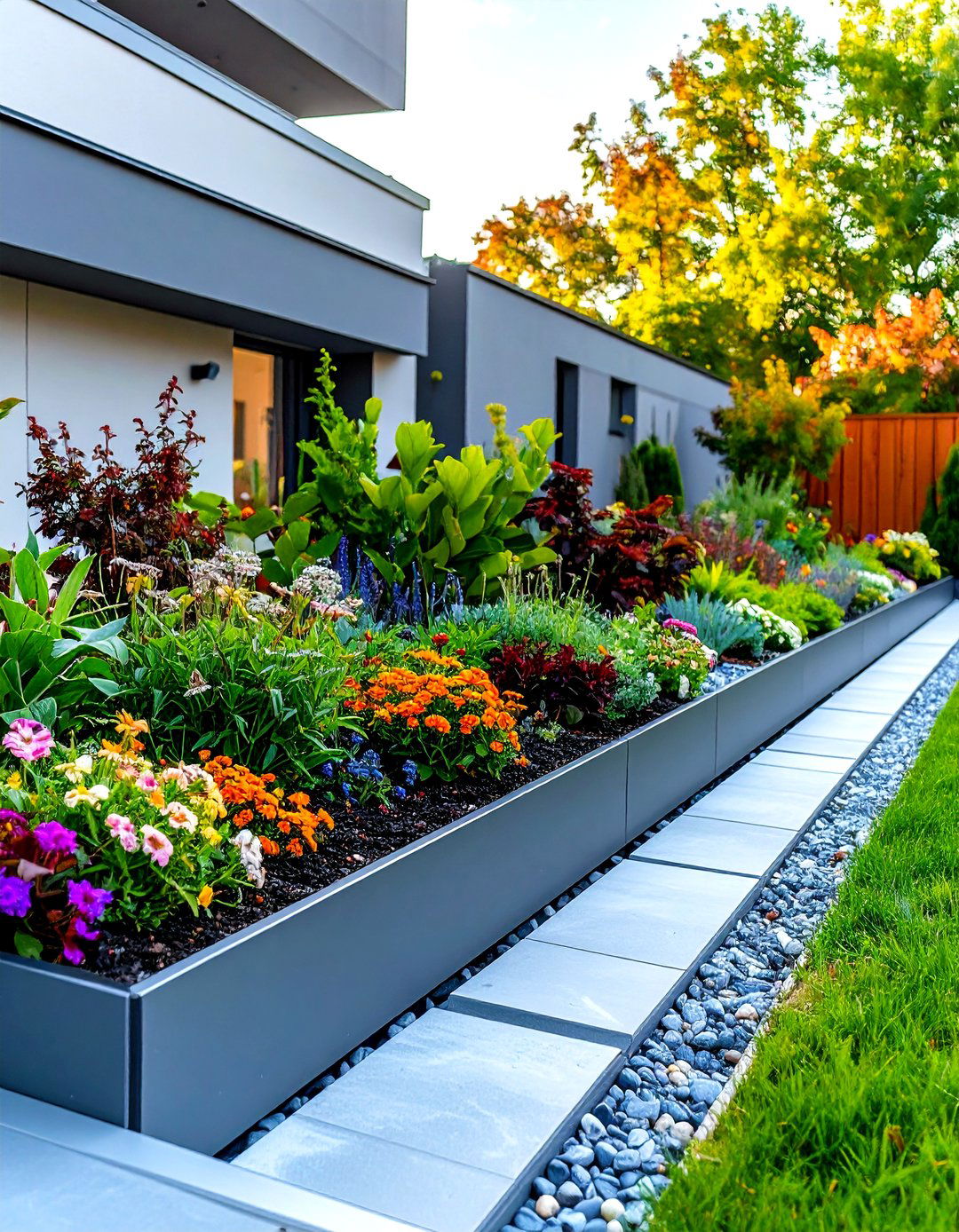
Modular aluminum garden edging delivers contemporary aesthetics through precise manufacturing and clean geometric lines. This lightweight material resists corrosion while maintaining sharp edges and consistent profiles over time. Various finishes including powder coating and anodizing offer color options that complement modern architecture. Installation utilizes interlocking systems that create seamless connections without visible fasteners. The material's dimensional stability ensures consistent appearance while its flexibility accommodates slight ground movement without damage.
12. Mosaic Tile Garden Edging with Artistic Expression
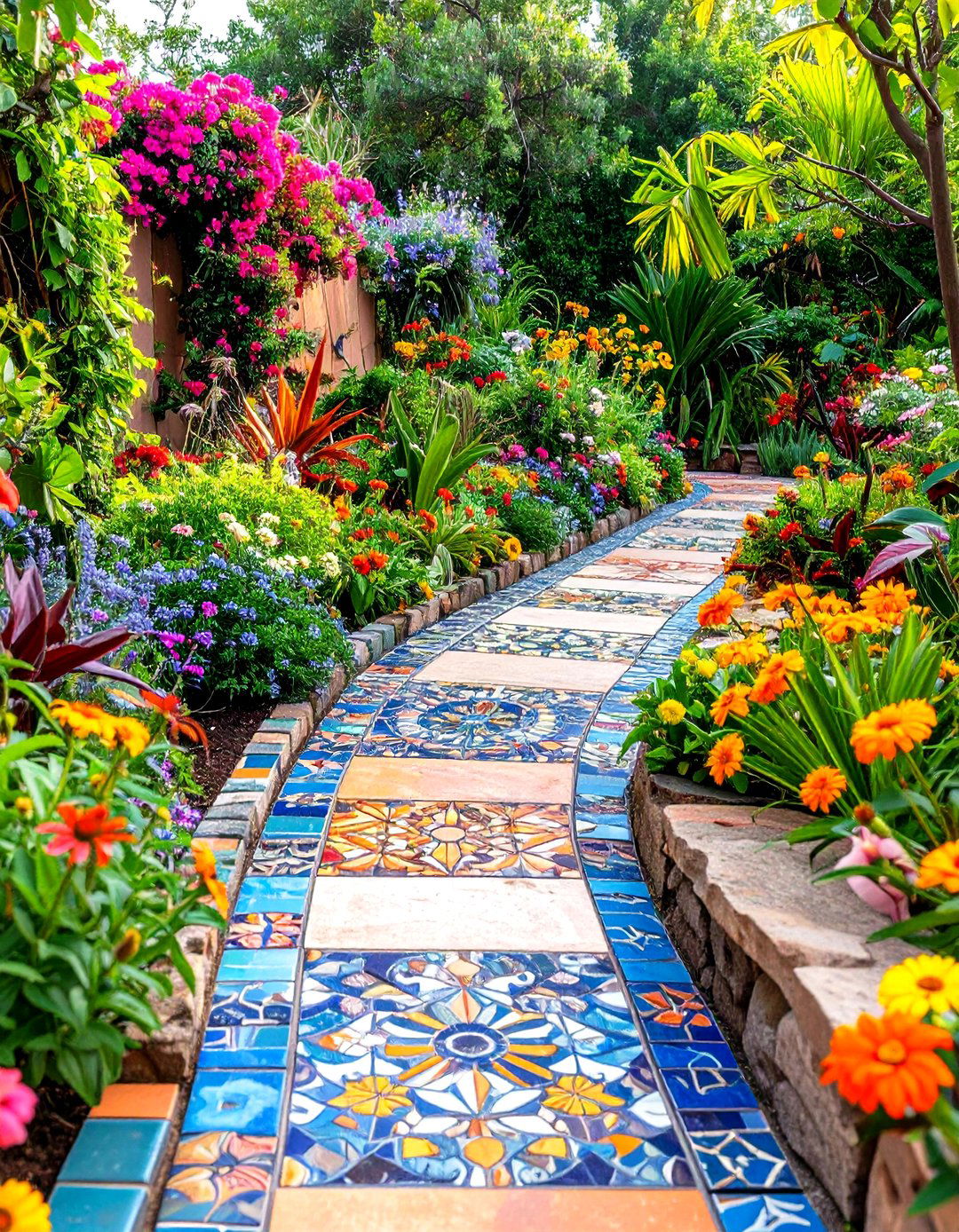
Mosaic tile garden edging transforms functional boundaries into artistic landscape features through creative tile arrangements and color combinations. This approach allows unlimited design possibilities using ceramic, stone, or glass tiles in various patterns. The installation process involves creating concrete base forms and carefully placing tiles to achieve desired patterns. Various tile sizes and shapes offer texture variation while colored grout enhances overall design impact. The resulting edging provides durable, waterproof boundaries that serve as permanent garden artwork.
13. Raised Concrete Block Garden Edging with Geometric Structure
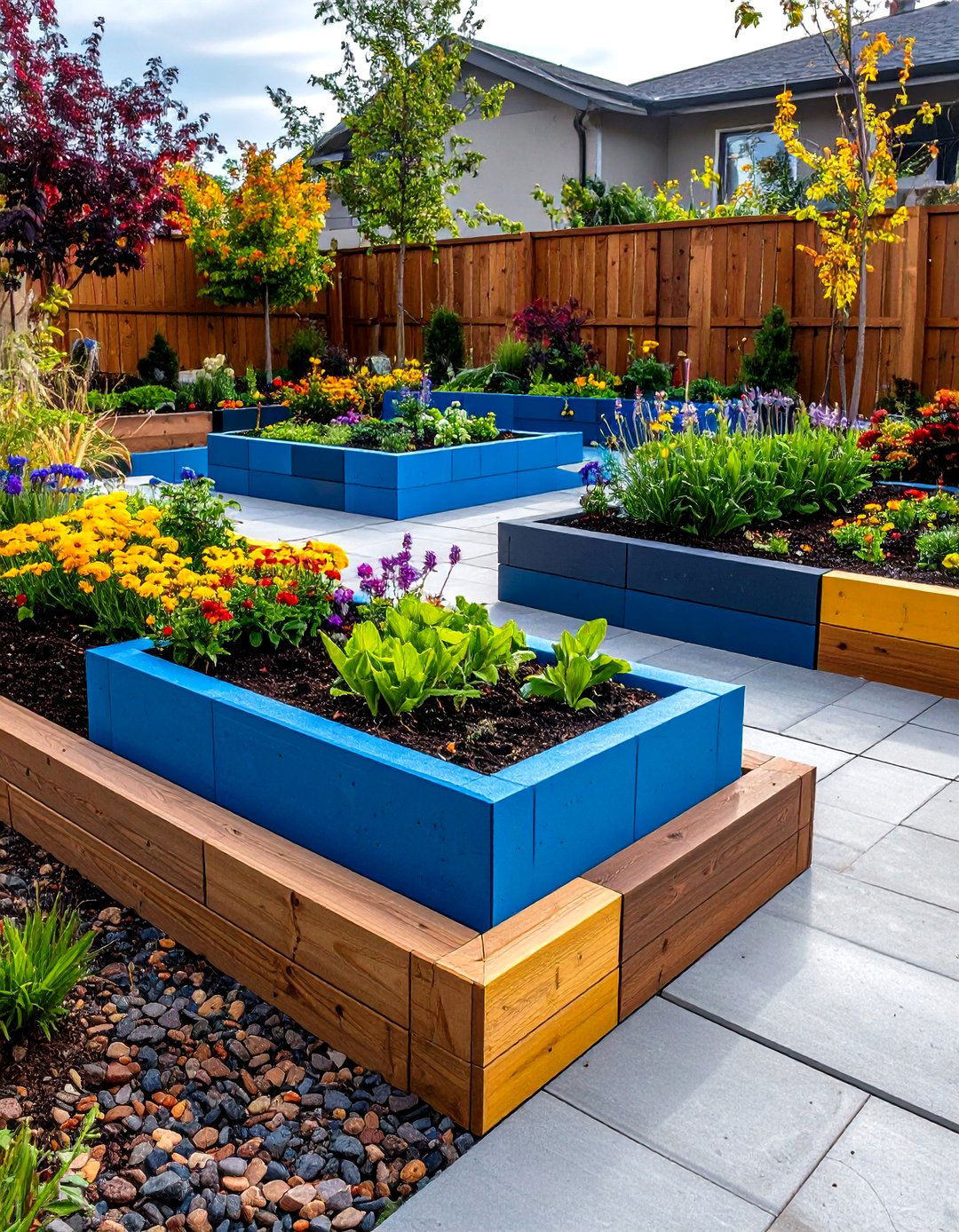
Raised concrete block garden edging creates elevated boundaries that provide excellent soil containment and visual definition. This approach offers various block sizes and colors for customized appearances that complement contemporary landscapes. The elevated design improves drainage while creating comfortable planting heights for maintenance access. Installation involves proper foundation preparation and careful alignment to ensure structural integrity. The modular nature allows creative stacking patterns while the material's durability ensures long-term performance in various weather conditions.
14. Flexible Resin Garden Edging with Organic Curves
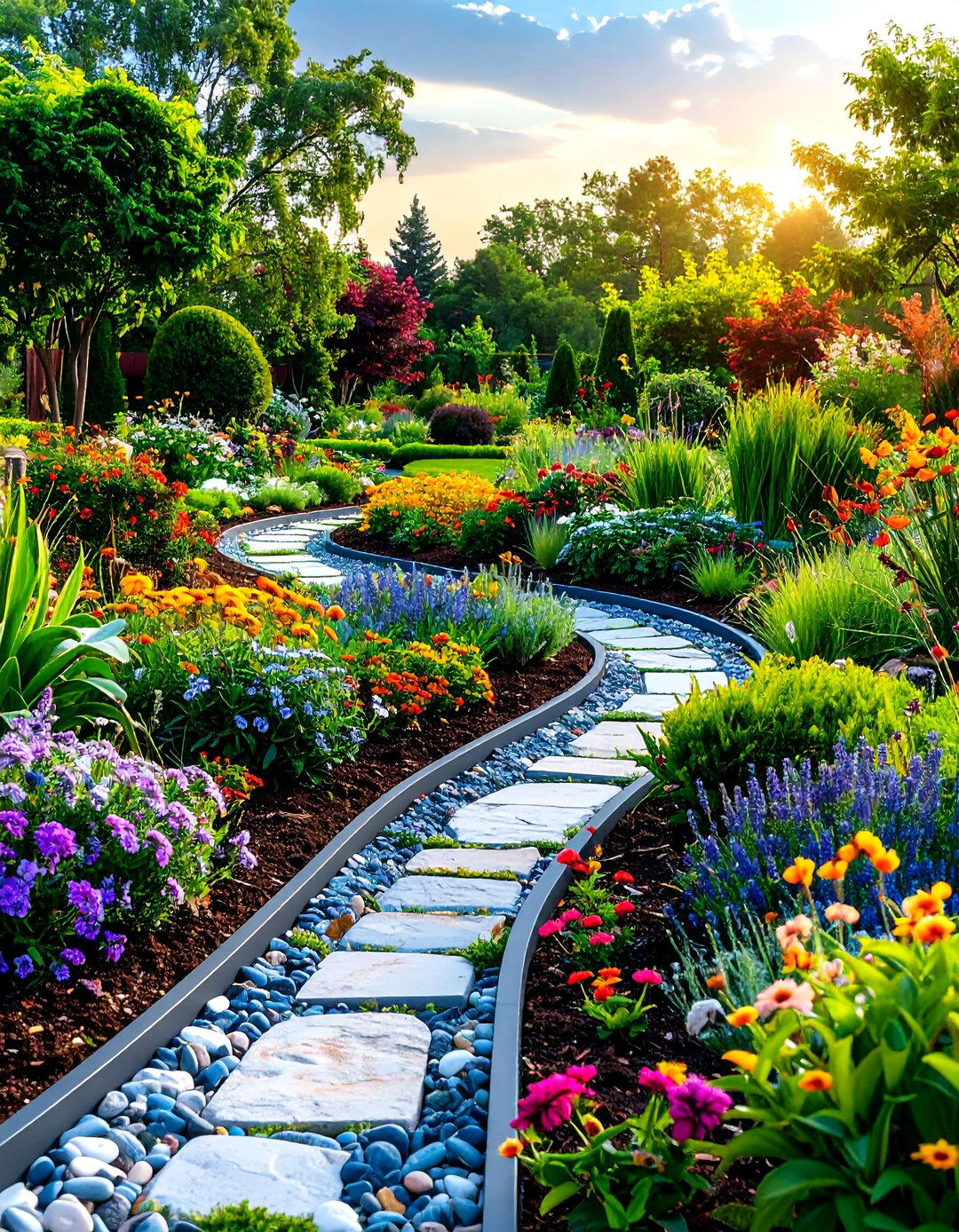
Flexible resin garden edging adapts to irregular garden shapes while providing durable, weather-resistant boundaries. This innovative material combines flexibility with strength, accommodating ground movement without cracking or breaking. Various colors and textures offer customization options that complement diverse planting schemes. Installation involves securing flexible strips using provided stakes and creating smooth curves that follow natural garden contours. The material's chemical resistance ensures long-term performance while its flexibility simplifies installation around existing plants and structures.
15. Reclaimed Wood Garden Edging with Rustic Character
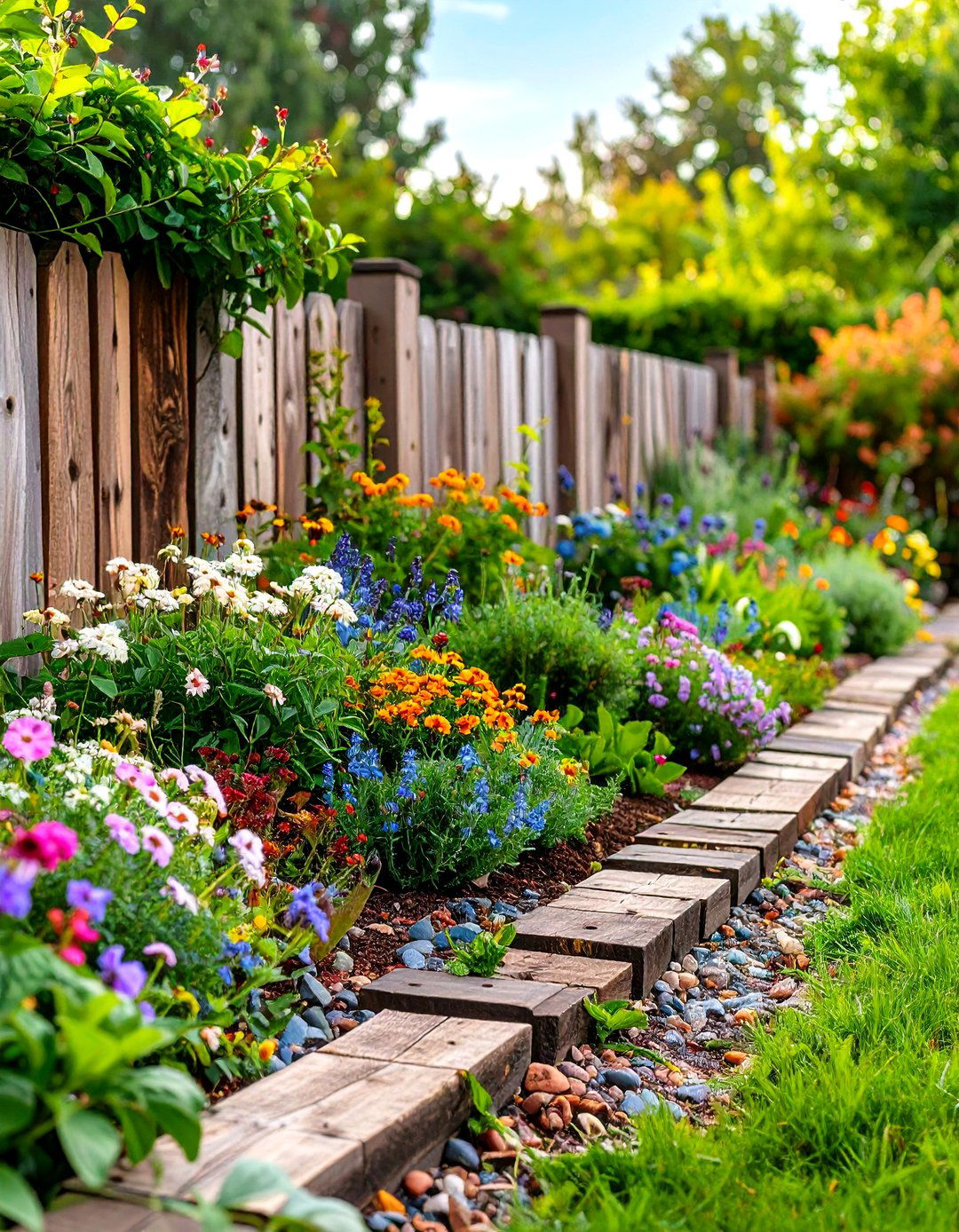
Reclaimed wood garden edging provides sustainable boundaries with unique character and natural aging properties. This approach repurposes materials like railway sleepers, barn wood, and industrial timbers for distinctive garden features. Various wood species offer different colors and grain patterns while weathering characteristics create evolving appearances. Installation involves proper treatment for ground contact and secure fastening to prevent movement. The material's natural properties complement cottage garden styles while providing effective soil containment and root barriers.
16. Fiber Cement Garden Edging with Architectural Precision
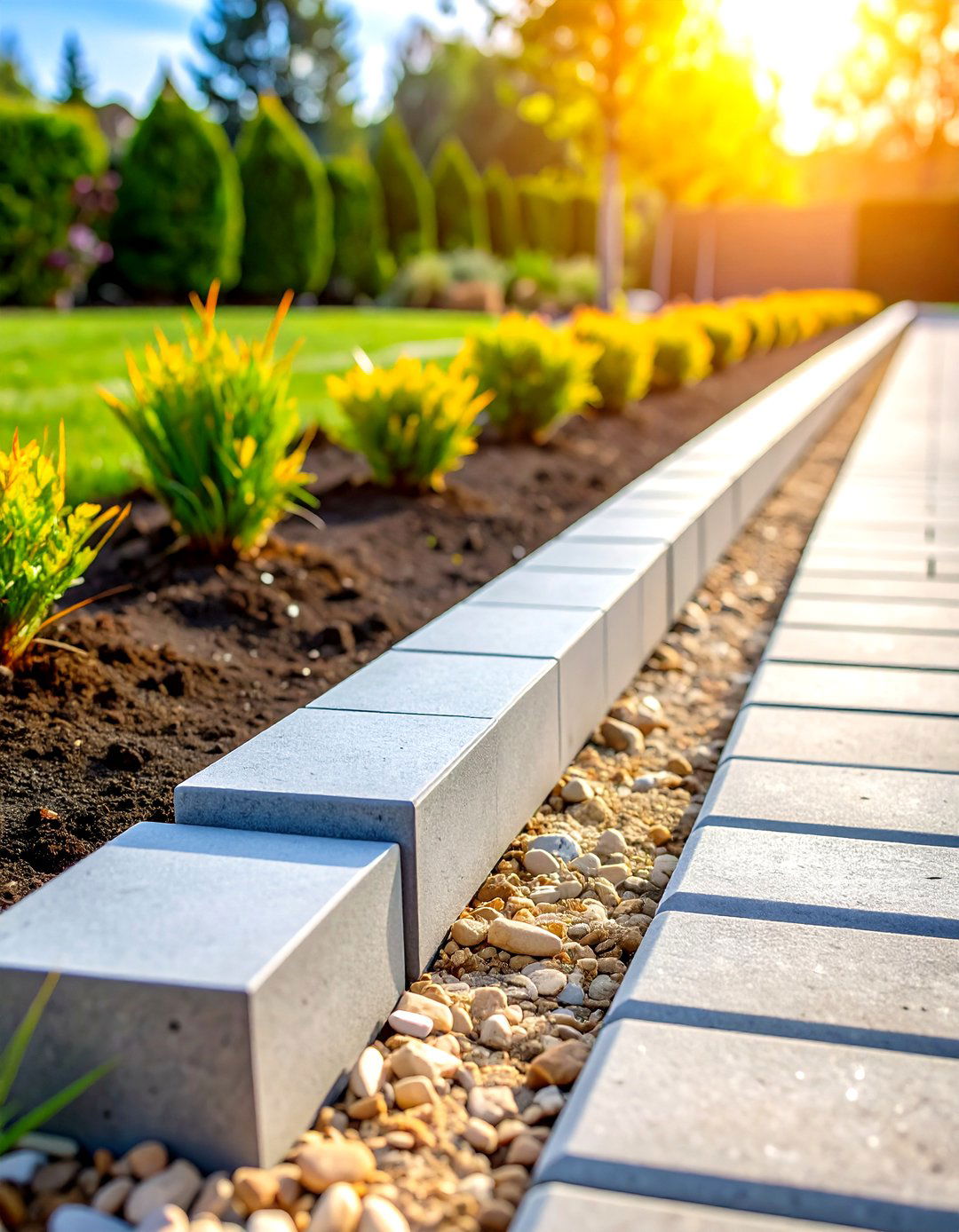
Fiber cement garden edging combines concrete durability with precise manufacturing tolerances for consistent, professional installations. This engineered material resists weather damage while maintaining sharp edges and uniform profiles. Various textures and colors simulate natural materials without maintenance requirements. Installation utilizes hidden fastening systems that create seamless connections between sections. The material's dimensional stability ensures consistent appearance while its fire resistance and pest immunity provide additional benefits for long-term landscape applications.
17. Decorative Aggregate Garden Edging with Textural Interest
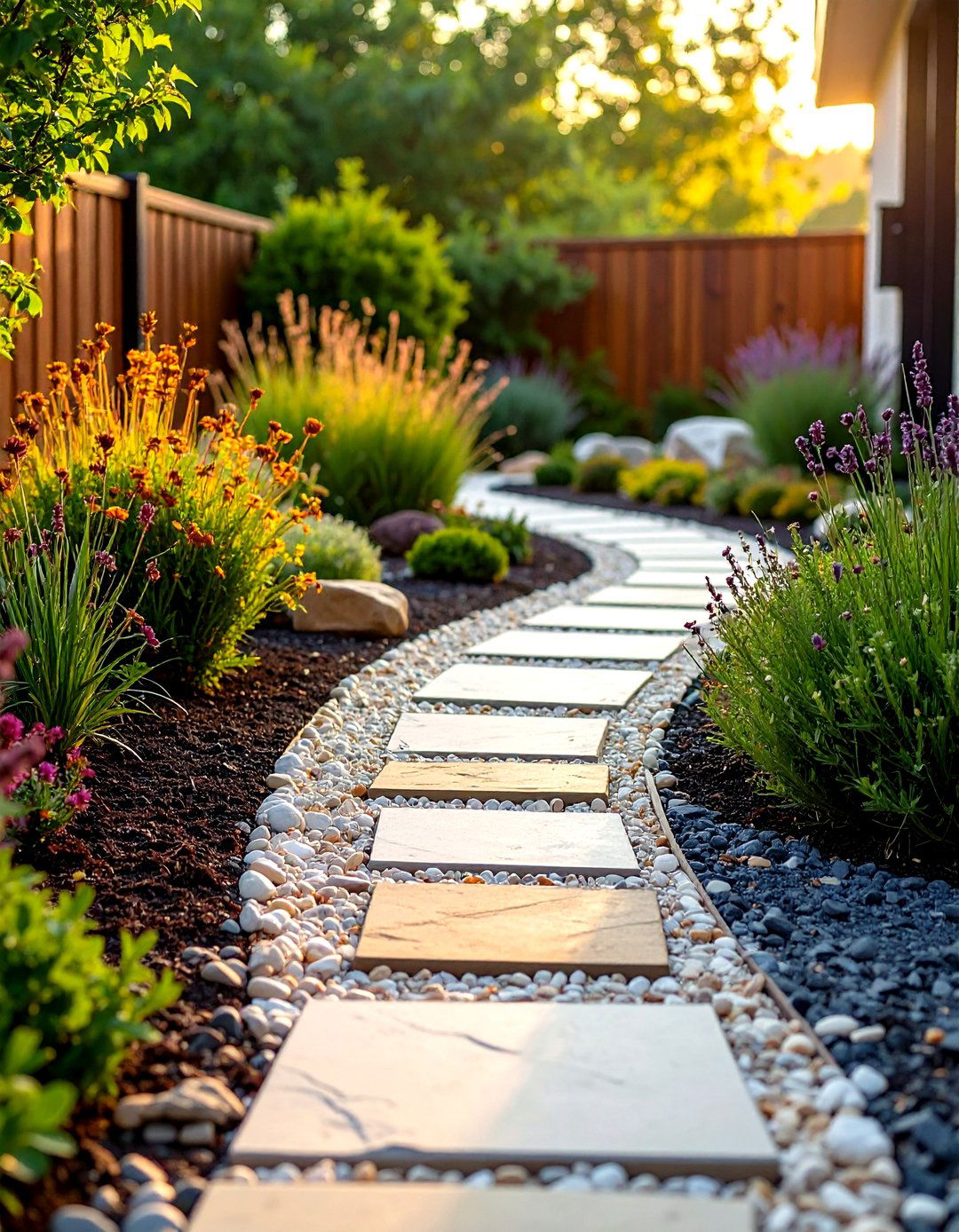
Decorative aggregate garden edging creates textural boundaries using exposed concrete with embedded stones, glass, or recycled materials. This approach offers unlimited customization through aggregate selection and arrangement patterns. Various sizes and colors provide options that complement specific garden themes and color schemes. Installation involves creating forms and carefully placing aggregates during concrete pouring to achieve desired exposures. The finished surface provides slip-resistant pathways while creating unique visual textures that enhance overall landscape design.
18. Interlocking Plastic Garden Edging with Installation Simplicity
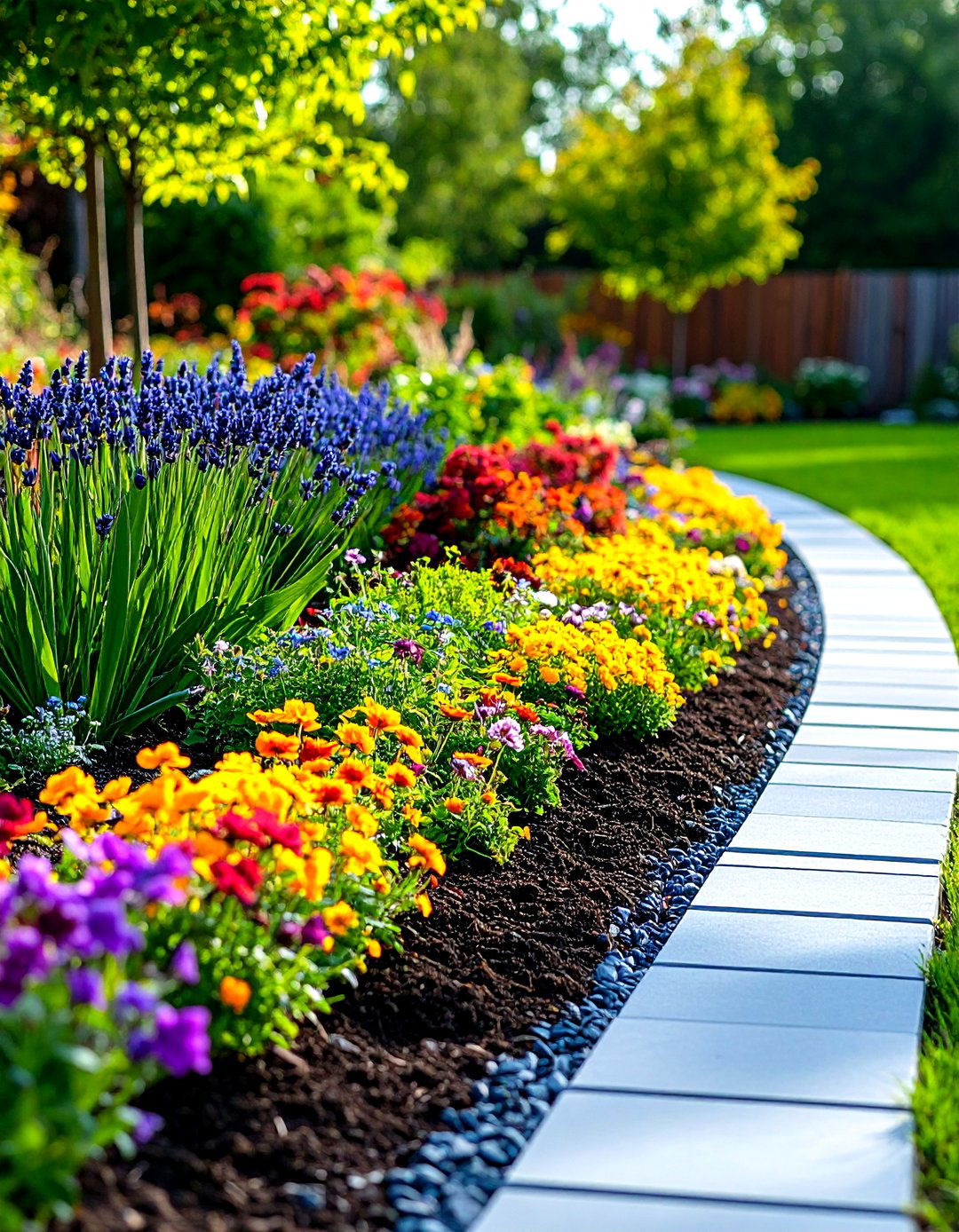
Interlocking plastic garden edging provides affordable, easy-installation boundaries through engineered connection systems and flexible materials. This approach offers various colors and profiles that simulate natural materials while providing superior durability. The lightweight material simplifies transportation and installation while its chemical resistance ensures long-term performance. Installation involves connecting sections using integrated clips and securing with provided stakes. The material's flexibility accommodates curves and irregular shapes while its weather resistance maintains appearance throughout seasonal changes.
19. Living Willow Garden Edging with Natural Growth
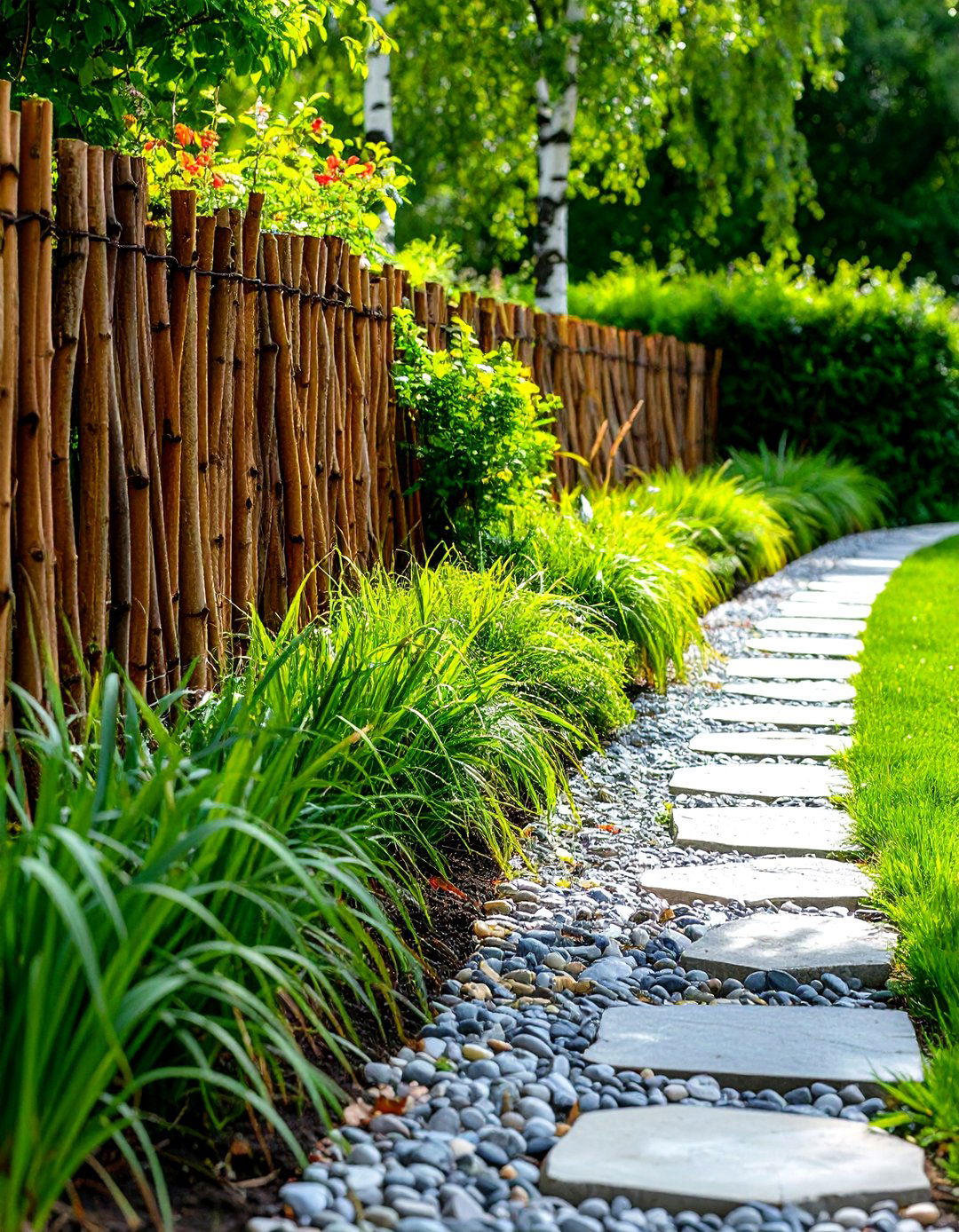
Living willow garden edging creates boundaries through traditional weaving techniques using live willow branches that root and grow over time. This sustainable approach provides evolving boundaries that integrate with surrounding plantings while offering habitat benefits. Various willow species offer different growth characteristics and seasonal colors. Installation involves weaving live branches into desired patterns and maintaining moisture for root establishment. The resulting edging provides natural barriers that strengthen over time while contributing to garden biodiversity and seasonal interest.
20. Solar-Powered Garden Edging with Renewable Energy Integration
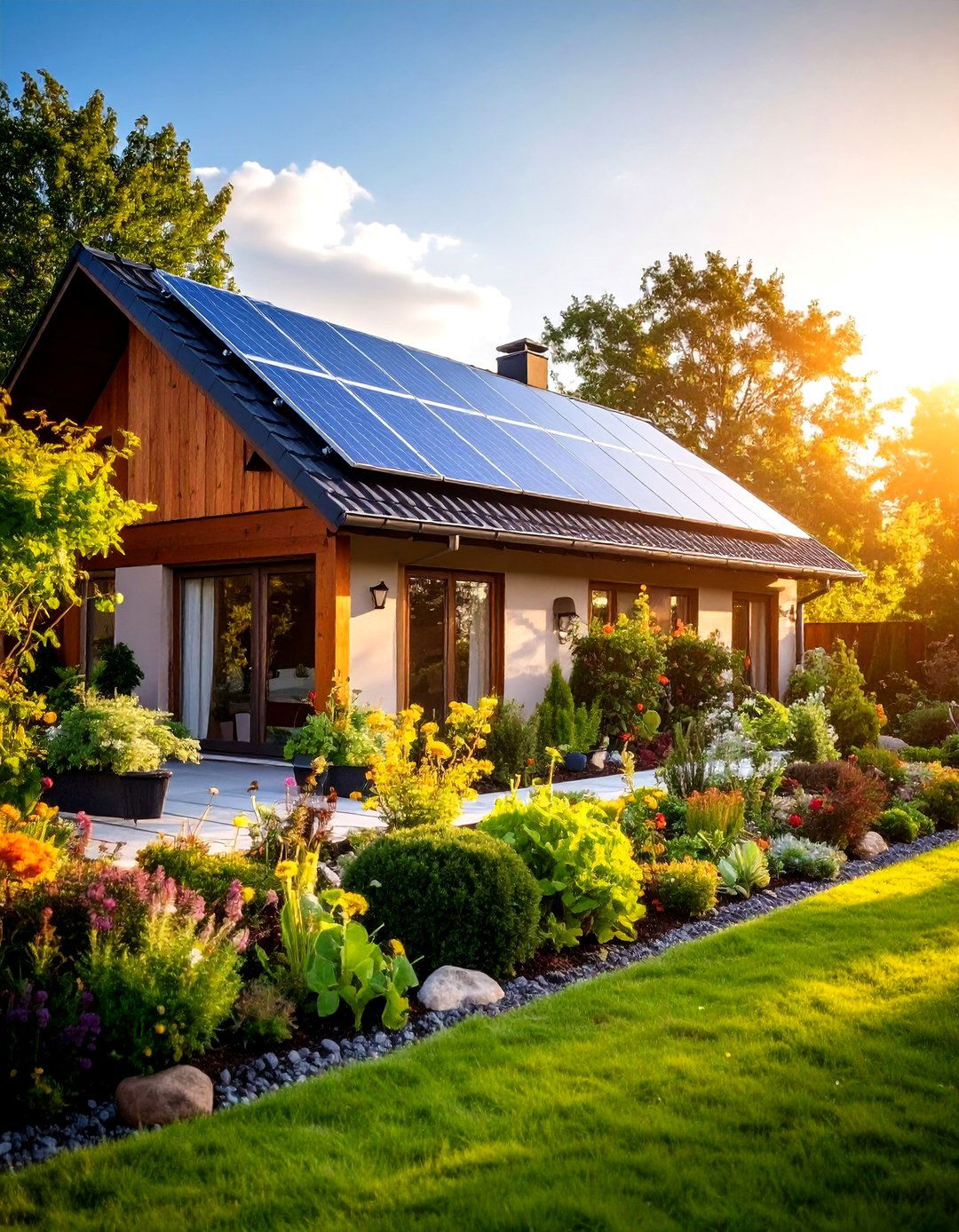
Solar-powered garden edging incorporates photovoltaic technology to create self-sustaining lighting systems that eliminate electrical infrastructure requirements. This innovative approach combines boundary definition with renewable energy generation for sustainable landscape lighting. Various panel sizes and configurations offer customization options for specific garden layouts. Installation involves positioning panels for optimal sun exposure and connecting to integrated LED lighting systems. The technology provides automatic operation through built-in sensors while battery storage ensures consistent performance throughout evening hours.
Conclusion:
Modern garden edging transforms outdoor spaces through innovative materials, sustainable practices, and technology integration. These contemporary solutions provide effective boundary definition while enhancing aesthetic appeal and supporting environmental responsibility. From industrial metals to renewable materials, today's options offer unprecedented customization possibilities for creating distinctive garden environments. The combination of functionality, durability, and visual impact makes these edging solutions essential elements in modern landscape design, ensuring gardens remain organized, beautiful, and environmentally conscious for years to come.


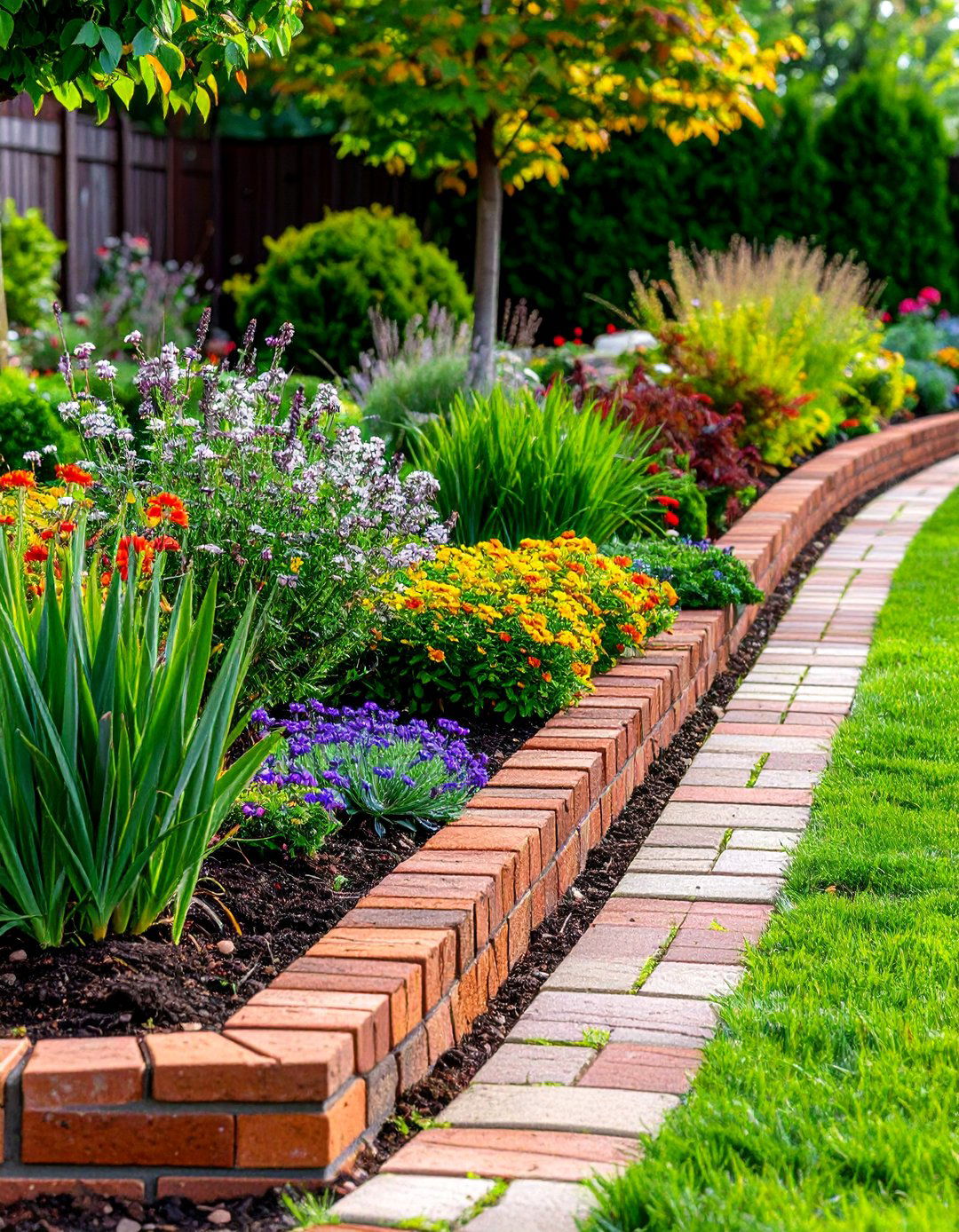

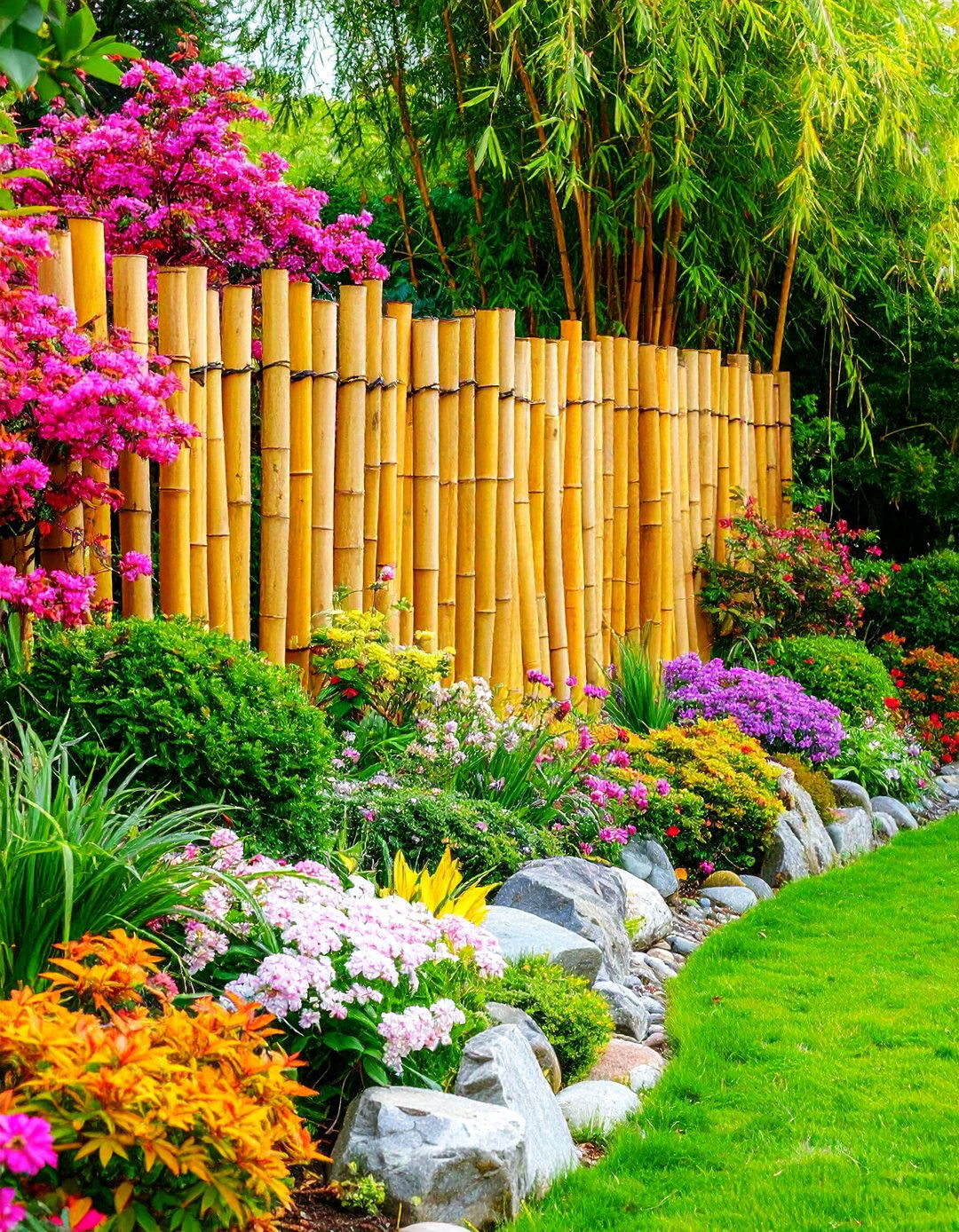
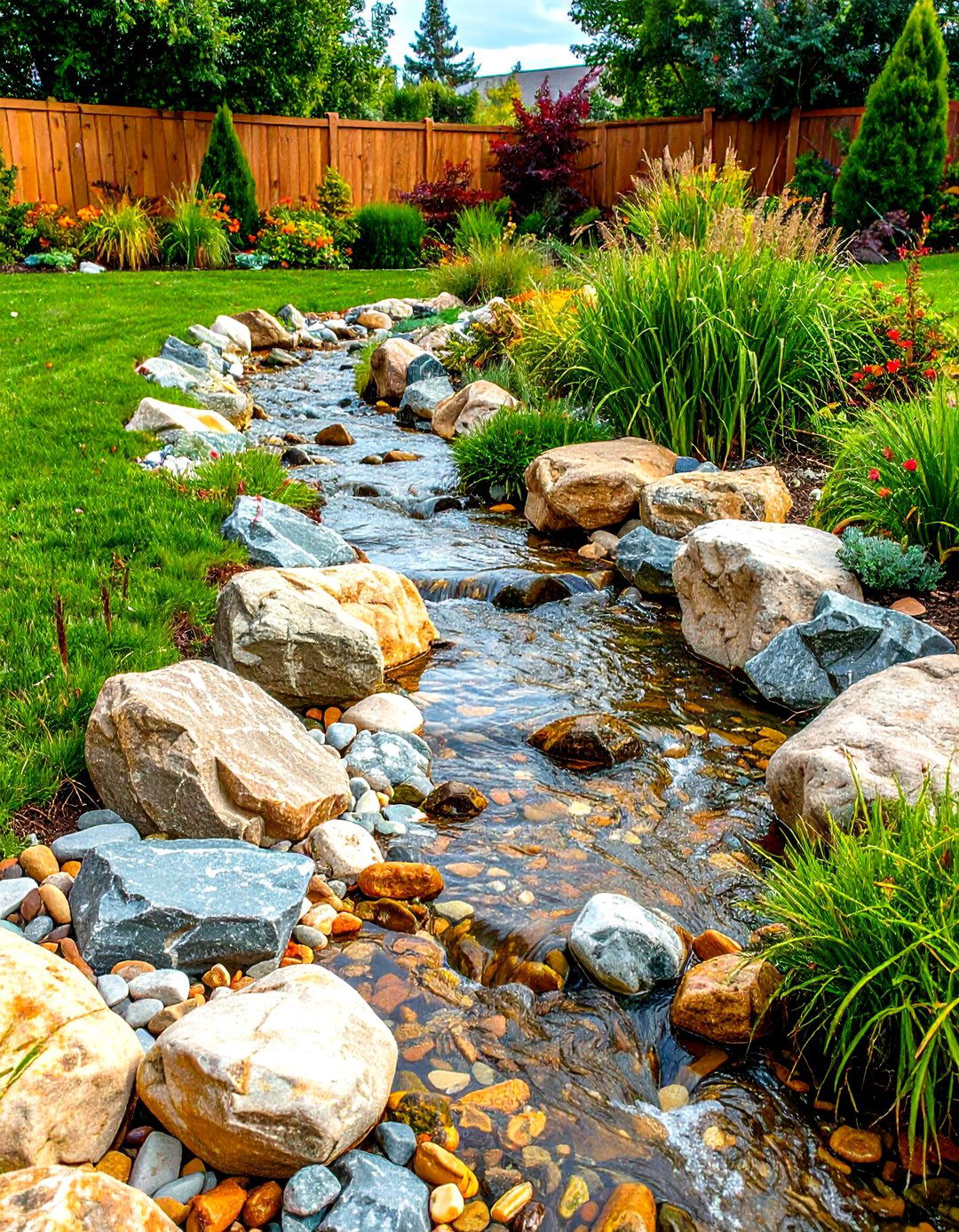


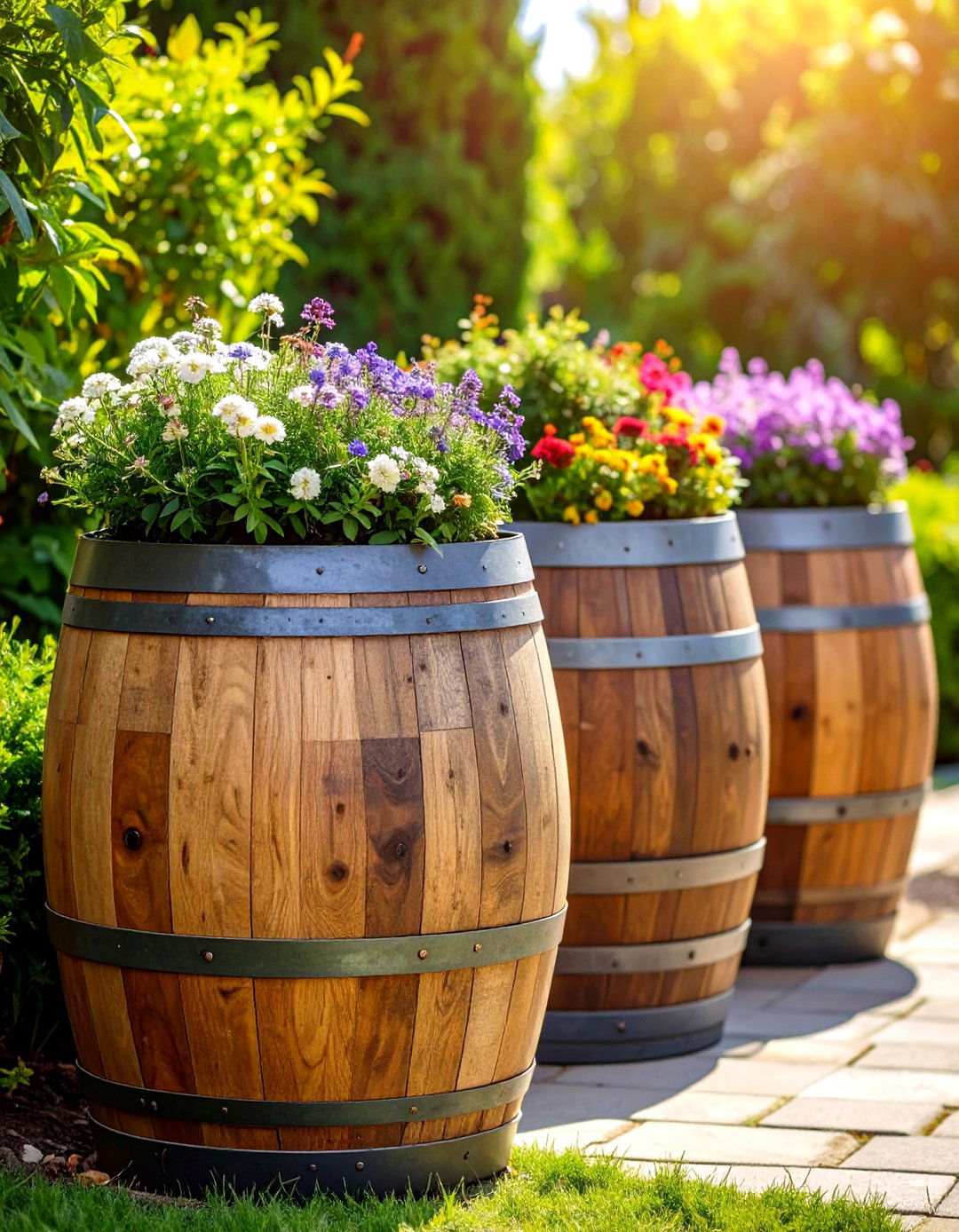
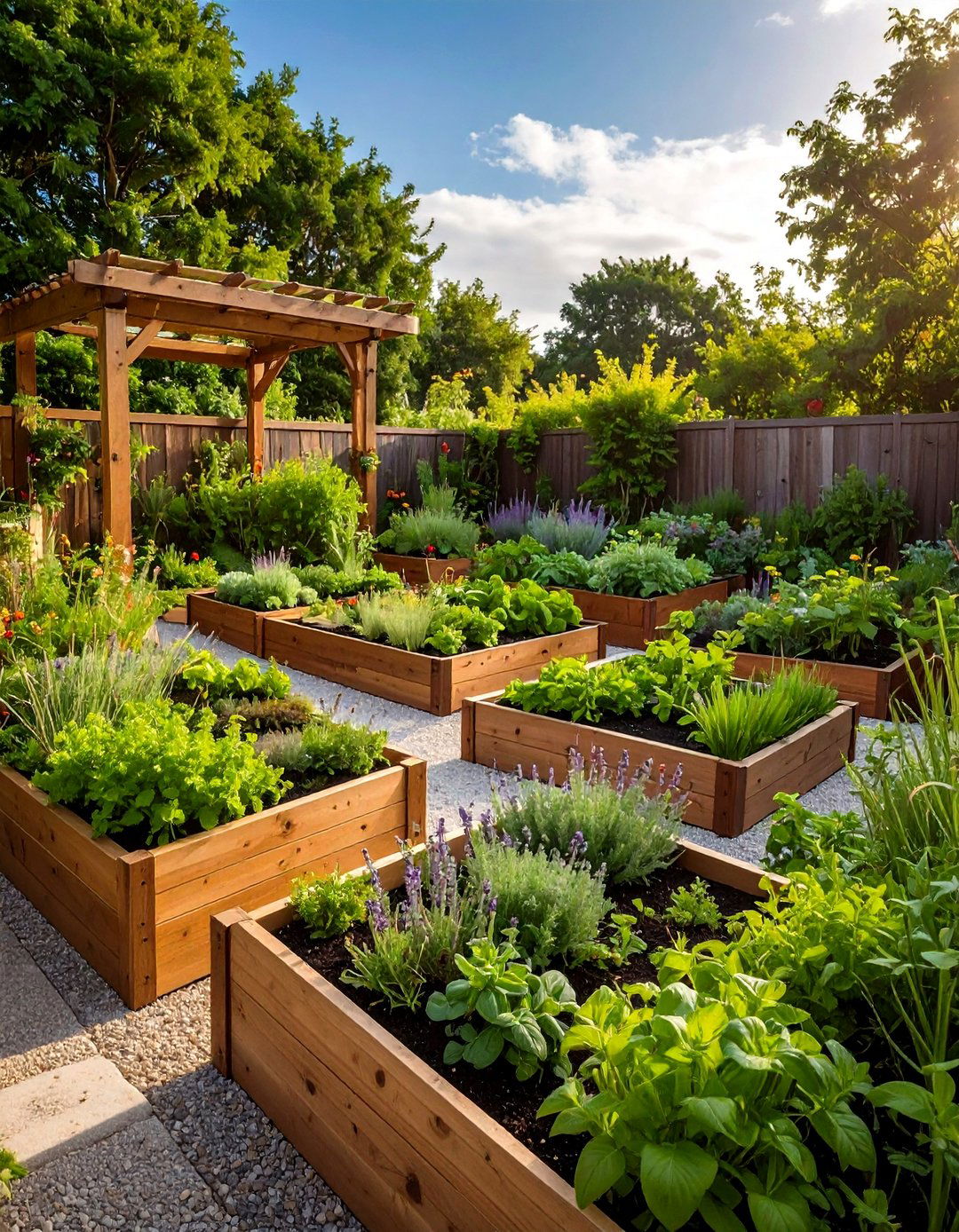
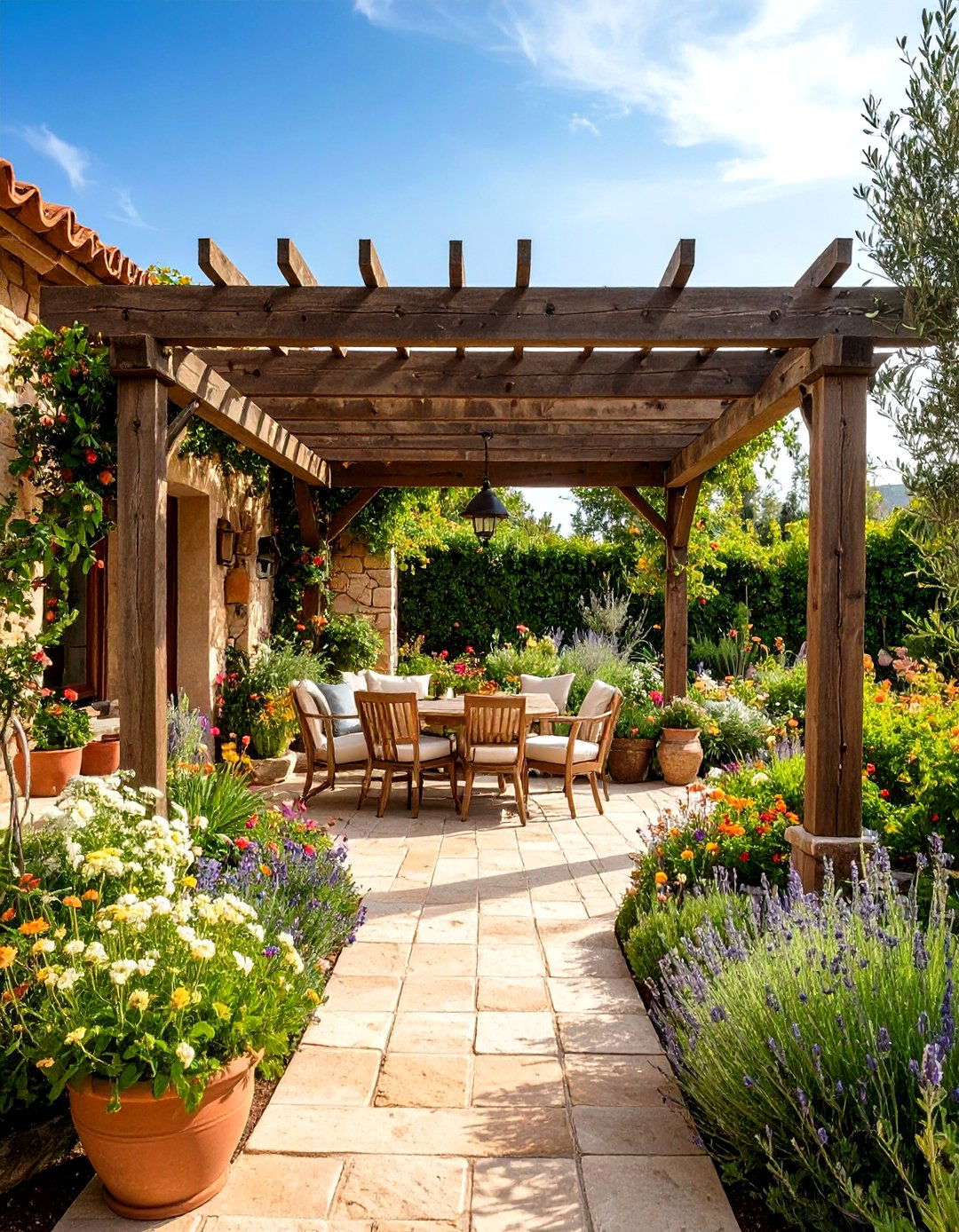
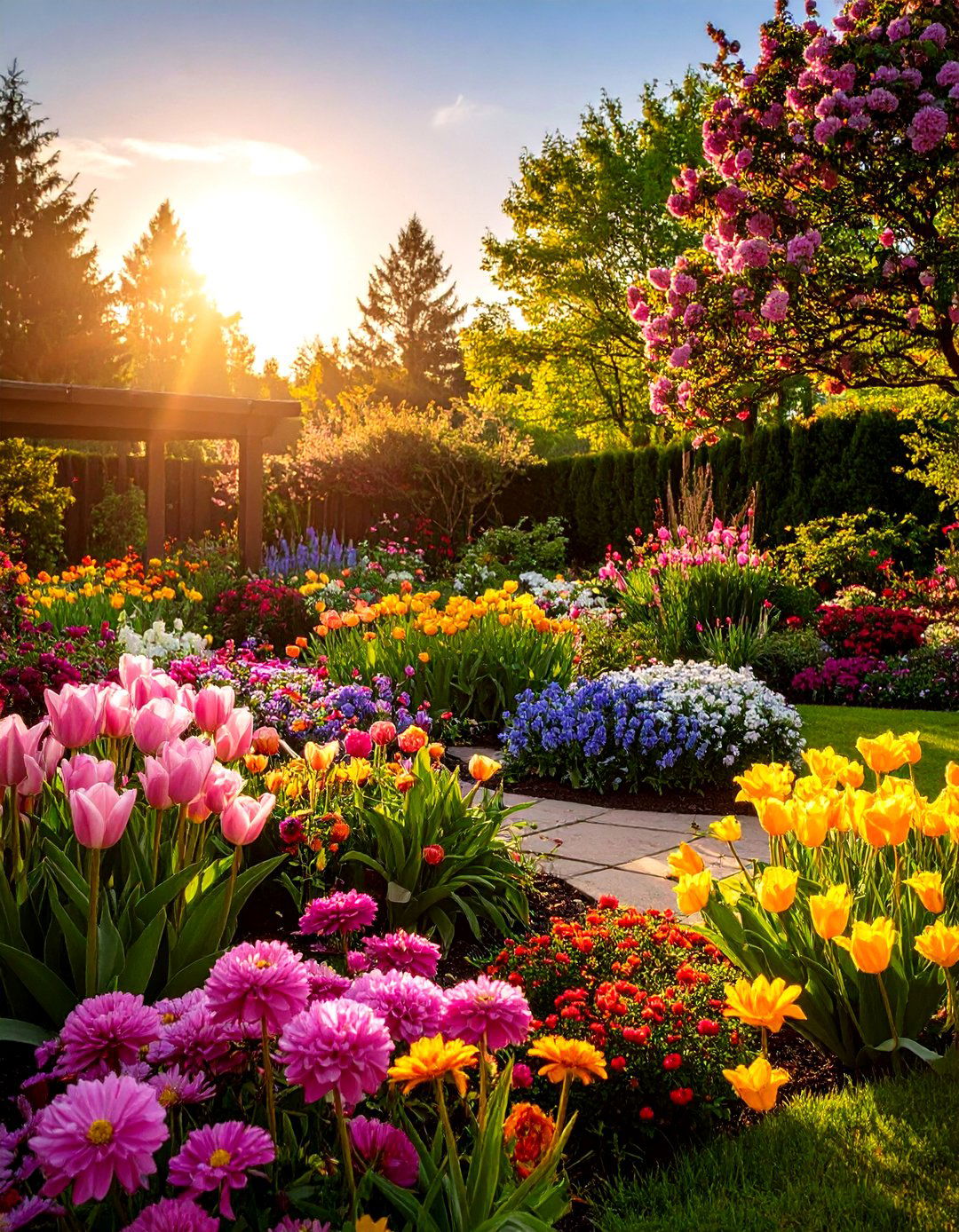
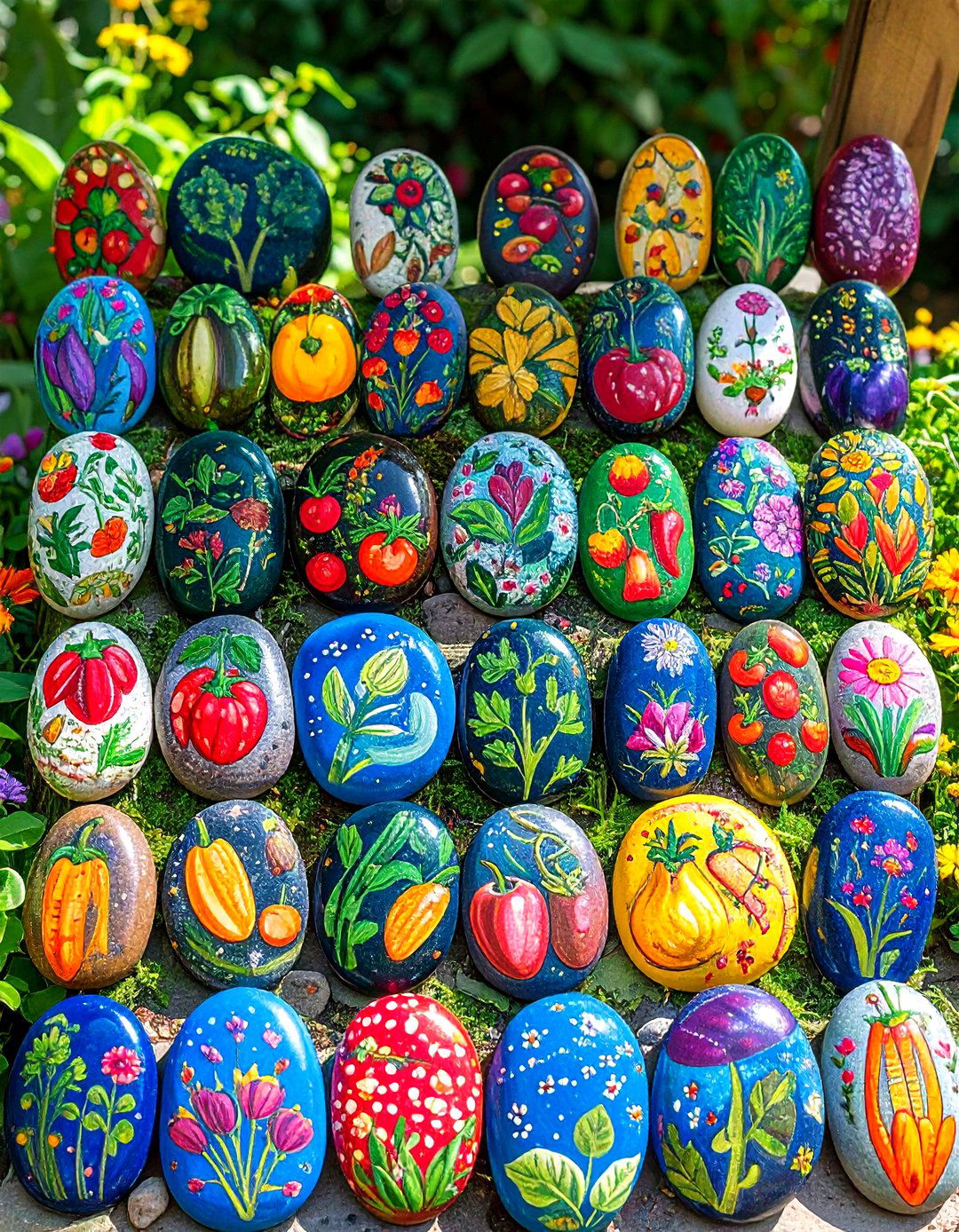
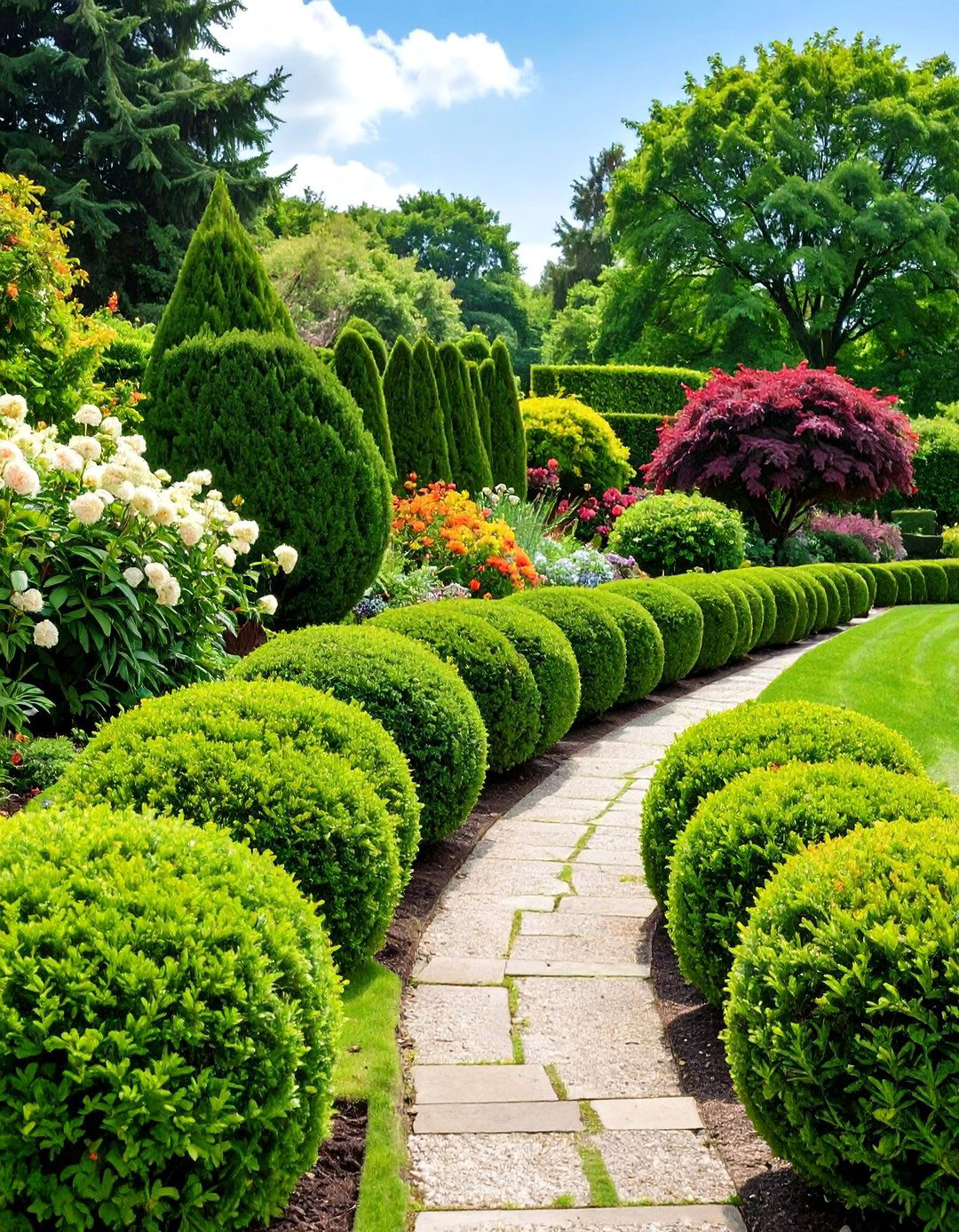
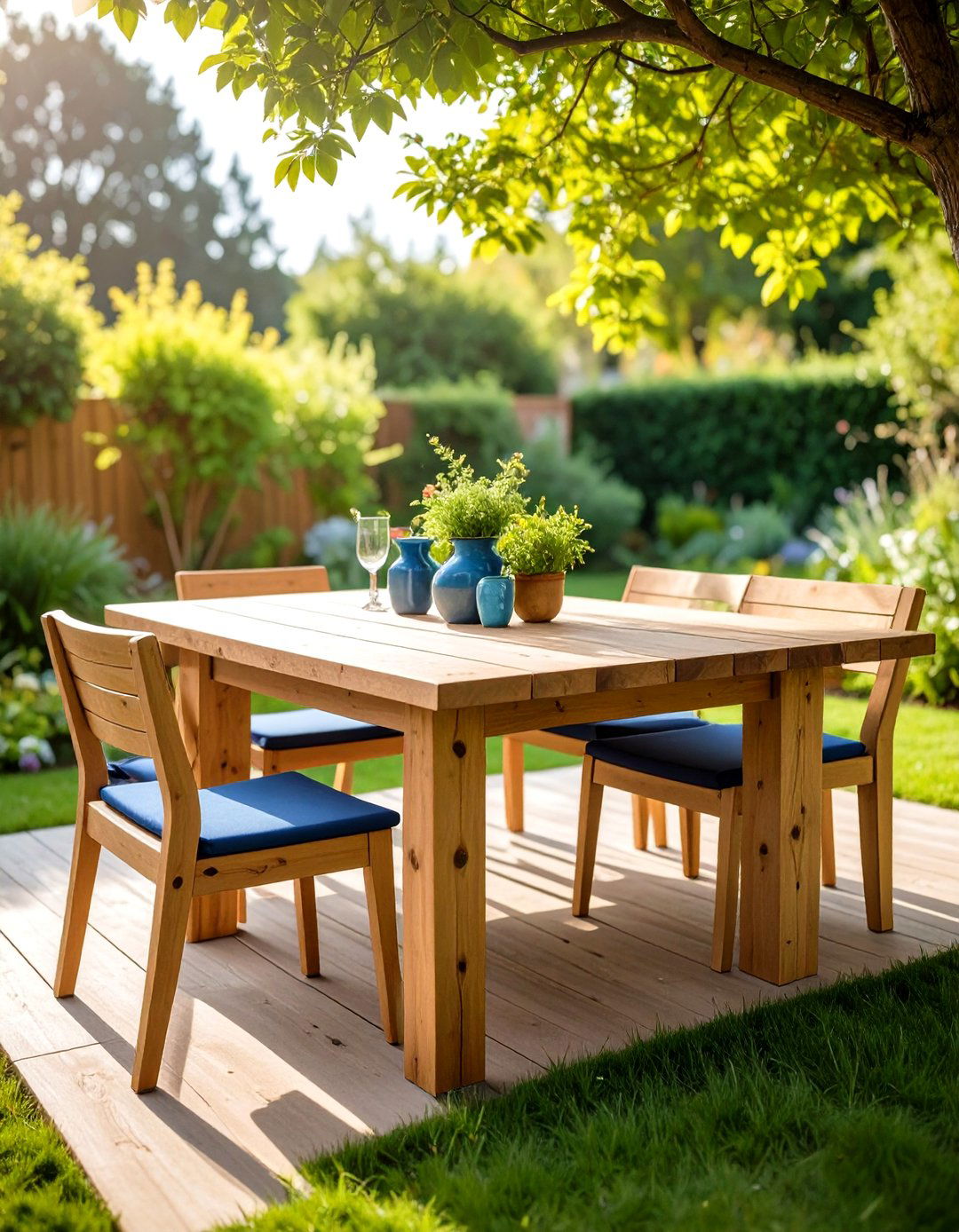
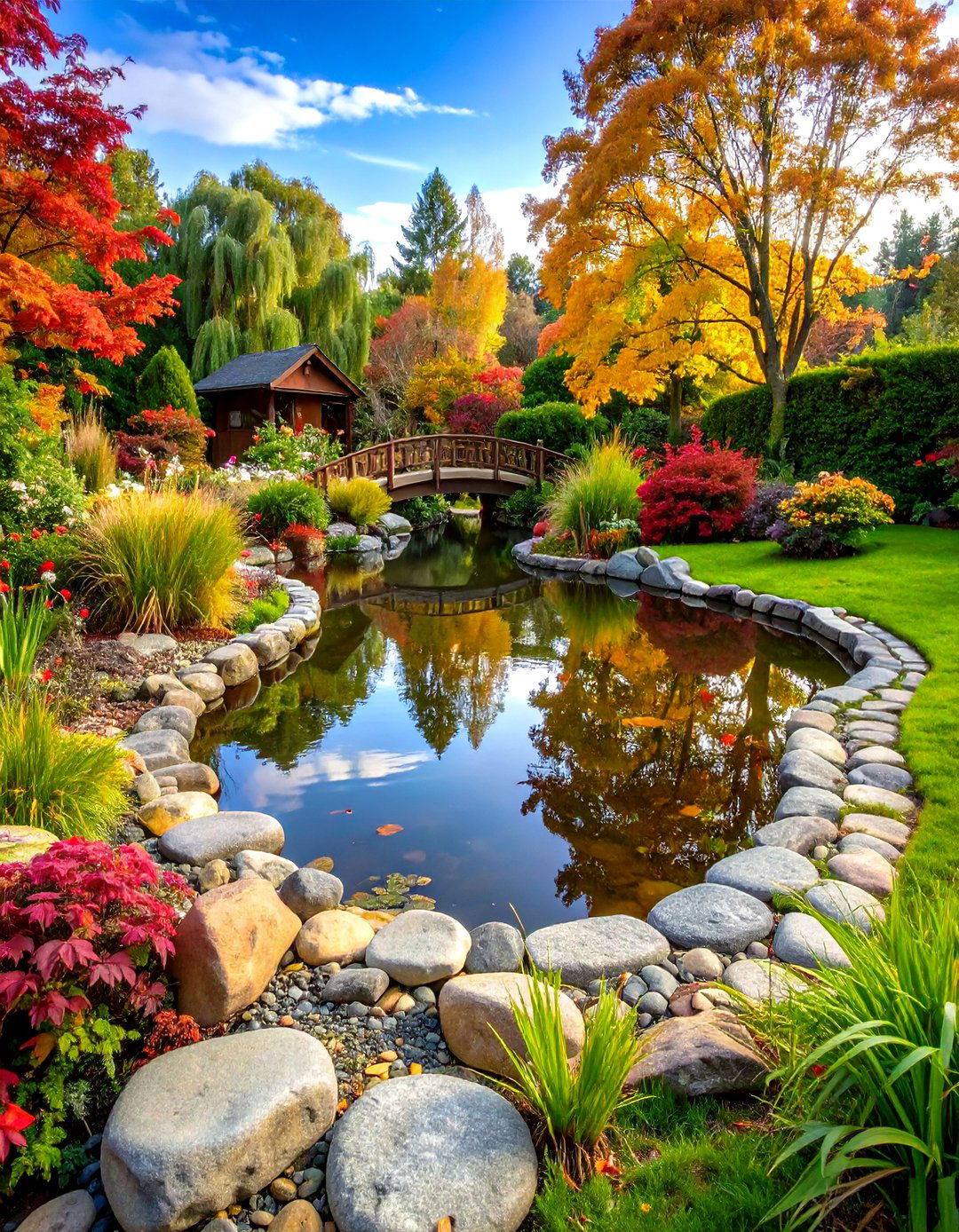
Leave a Reply